#if it’s not being an extension of another character it’s just the most baseline personality traits being shown off
Explore tagged Tumblr posts
Note
Peak HoO era common fanon interpretation of the 7 be like 🤣🤣
Percy: #hashtag persassy super badass except for when he's busy being The Stupid One
Annabeth: holder of the 1 braincell 🤣
Jason: worse version of Percy, amirite?? what a bore
Leo: blank slate for whump and projection, poor baby uses humour as coping ☹️☹️☹️
Piper: not like the other girls
Hazel: uwu she's so innocent 🥺🤭 can you explain this to her? She doesn't get it she's too sheltered ☹️☹️
Frank: only exists to beef w Leo
BONUS‼️‼️‼️
Nico: where does one begin
easy: Nico is gay. Fullstop.
#yeha this is uhm well right on the money#like honestly I am not the biggest HoO hater like I bash it sometimes#but like I do like them#and the character stuff FOR THE MOST PART is very fun#but like uhuhuhyg the fandom versions of those characters are just so insufferable sometimes#and like as a Percy enjoyer especially the way Percy has been fucking poisoned by this kinda shit in fan work is infuriating#BUT ALSO annabeth being completely ignored is like infuriating#because I like annabeth but trying to find good annabeth centric fics is way harder than with most other chractaer#and then there’s like Leo and Jason who are just like#thrown under the bus in terms of characterization#like I’ll be the first to admit that Jason#is not really my favorite#but like he’s SO INTERESTING like here’s a guy who was basically introduced to a normal life and it changed him completely#and then there’s Leo is also very cool from a character perspective#but then like they barely get anythingggggggg#if it’s not being an extension of another character it’s just the most baseline personality traits being shown off#and then there’s piper which like#good luck if you’re a fan of her like I#honestly don’t know what to tell you#and then hazel and Frank well if it’s not love triangle stuff then you’re out of luck#uhuhghuhhugg sometimes I feel like a super villain#who wants to reunite all of the pjo fandom in my image#anyways SORRY for the ramblings#I am just a lil hater#asks
11 notes
·
View notes
Note
Rishaeron
1. Rishaeron's name was initially a placeholder until I thought of something better. "Rish" comes from my brother Richard that was living with me at the time and "Aeron" coming from the fact that all Elf names need to have as many vowel sounds as possible.
2. Rishaeron speaks a lot in mythological language, muttering prayers to the dead pantheon that he knows won't be heard but help him focus in the moment. It's something of a bitter irony that he chooses to invoke, but it keeps him centered.
3. Years of Rishaeron's life were lost after the campaign against the Ork Shaman, this is because he never removed the War Mask during his murderous missions for the Seer Council and as a result has no memory of those years.
4. Like most Aeldari, I expect, Rishaeron is pansexual and has had short relationships with Asuryani of most persuasions when he initially became an Outcast.
5. I'm very careful with managing his power levels, like all my characters. Rishaeron is faster, stronger and better trained than most baseline humans in the galaxy and has the capacity to kill Astartes so long as the battle is fought on his terms, but not in hand-to-hand.
6. His hobby of scavenging and cooking is an extension of one of his dead Rangers habits, he believes keeping parts of others personalities within his own keep their memory alive. To this end he collects interesting flowers and keeps them pressed in a book as well as mentors any new travellers that need his help.
7. Part of his awakening from his survivors guilt enduced haze was a conversation with Ana Mr'ez that reminded him his actions could be used to actually help people, it was also the first friend he made since the disaster.
8. Unlike most Aeldari, his body is riddled with scars. Las-burns, shrapnel, cuts and stab wounds that would usually be treated to dissappear by Bonesingers have instead healed in the field and resulted in many varied and faded marks upon his body. The worst of which being the formerly infected wound he took from a Daemonette that was corrupted over time. The scar tissue has mostly healed how and runs from the bottom of his left pectoral to just above his hip.
9. He has walked many Aeldari paths on Ulthwé, both military and civilian. These include being a Dire Avenger, Striking Scorpion, Black Guardian, piloting war engines and support platforms as well as being an artisan, musician and walking the path of service.
10. The intention for Virtute is for the home on the unnamed paradise world to become a sanctuary of sorts for mistreated Gyrinx animals across the galaxy with Virtute being the first rescue. The two don't like to be far from one another and Rishaeron has a pouch he uses to carry the Gyrinx in equipped to his pack.
1 note
·
View note
Text

Kinn carries himself with the relaxed ease of an heir born to inherit a throne, and the singular, brutal focus required to keep it. The first time we see him, he casually shoots a man point-blank without a sideways glance (literally)- not out of necessity, but as an almost-aside power play.
Time & time again, we've watched him seamlessly transition from compassionate and thoughtful to icy calculation in the blink of an eye. He lives life on a razor’s edge and makes it all look easy…effortless, even.
These qualities alone would make for a fascinating character, but the pièce de résistance: the more time we spend with Kinn, the more his complexity grows.
The glowing, beaming Kinn in the forest scenes of episode six was so far removed from the man we had seen so far, he could almost pass for another person entirely. It would require an enormous amount of mental and emotional effort for most people to slip in and out of starkly-different personas like they’re a second skin, but Kinn does it on the regular.

Note: there are plenty of brilliant meta posts out there analyzing the decisions Kinn makes, the way he leads, etc., so I won’t be delving into that here. When I’m trying to understand why a character acts the way they do or anticipate what they might do next, I always go back to back to the beginning- both in the literal sense (their past), but also to the fundamental building blocks of who they are. I won’t be going into any theories here, either (Jesus, Mor; WTF are you even writing, then?).
My goal here is to establish a baseline of what makes Kinn, Kinn, because everything else- his choices, his mistakes, his strengths and weaknesses- all flow from it. I'm also fascinated by why Porsche appeals to Kinn in this fundamental, elemental sort of way, which ties back big-time to that character baseline.
You are waiting inside your father’s shadow. -Wale Ayinla, Portrait of a Boy with Grief
Always deferential to his father, Kinn takes his duty as the obedient heir apparent very seriously. This undoubtedly comes just as much from the drive to fulfill his obligations to his family- and keep them safe by extension- as it does from a baser, fundamental need for love and approval. In Kinn’s world, both are irrevocably tied up in the harsh realities of being a part of Bangkok’s strongest mafia family.
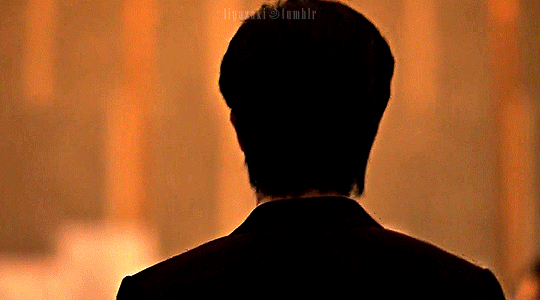
All three Theerapanyakul brothers were born into a bloody, no-win game. There is no opt-out option, no alternative to this life they're in. There is no room for flawed, human sons with needs and desires and concerns and hurts- well, not the heir, anyway. Work-life separation can’t exist here, and forget any expectation of autonomy: in this world, choosing any other kind of life is tantamount to betrayal.
In almost every conversation Kinn and Korn have, the focus remains the same: the family- the mafia family- always comes first. When conversations take the rare turn toward the personal, Korn always redirects the focus back to the business, painting a picture of a father-son relationship based not on unconditional love and acceptance, but on performance, strategy and success.
Caring equals vulnerability. Never show either. -Malorie Blackman, Knife Edge
Constantly playing chess both literally and figuratively, Korn is such an intelligent strategist, I’m sure he’s only too aware of the softer, sensitive Kinn underneath the persona- a fact that he’ll undoubtedly use to his advantage at some point. Korn knows how his son ticks, and I can see him trying to use that knowledge to keep Kinn exactly where he wants him: firmly under his thumb.
Case in point: Korn pressing a finger into the metaphorical wound in reminding Kinn of how things turned out the last time he fell in love.

Like the saying goes, “when someone shows you who they are, believe them.” No scene gives us as much insight into Korn than the conversation he and Kinn have at the dining room table.
Kinn is so fresh out of the hospital that he’s still hooked up to a machine monitoring his vitals. Korn briefly acknowledges his injuries before getting to the task at hand: giving Kinn a history lesson in how his love for Kinn’s mother distracted him from his goals, and by inference, from what’s really important.
She wants you to be a god. -Madeline Miller, The Song of Achilles
At the end of his speech, Korn hands Kinn a piece of an apple, telling him to come back to his family- that they’re waiting for him. Kinn hesitates before casting his gaze downwards, then taking and eating the apple with silent resignation.
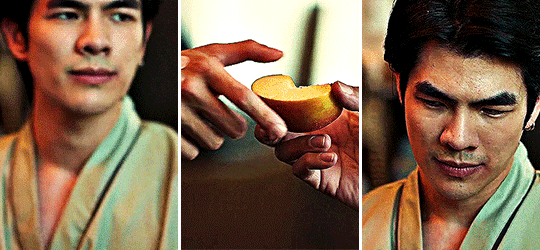
There are so many symbolic interpretations here, but the heart of it is that this is far from a sentimental, fatherly request: Korn is asking Kinn to rise above the “distractions” he couldn’t, above the joys essential to the human experience.
To elevate himself beyond common humanity and essentially 'become a god' (meant in the literal sense in the quote's source material, but too good of a quote not to use here). Be everything his brothers could not, or would not. Take on the mantle. Earn the love.
Kinn is motivated by familial duty beyond his father, too. Tankhun's kidnapping likely created little ripples of trauma in the family that went well beyond him- and there’s no way it was dealt with in a healthy way- or more likely, dealt with or acknowledged at all.
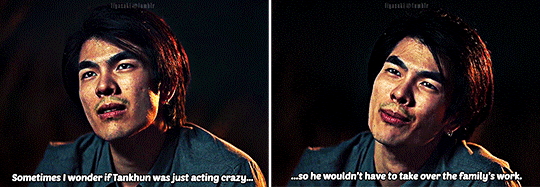
At some point, Kinn- the middle child- stepped up and took on the burden of leadership that was meant for Tankhun. While we don't have the full story yet (if we ever will), he probably did it with zero complaints. The only moment when we get a hint at how much the his role weighs on him- and the fairness of him having to bear it- is in his (micro) confession in the woods with Porsche.
Left to his own devices in the shadow of Korn's expectations, Kinn would never able to fully step into whoever he could be (or may have been)- all in this insidiously-intelligent way that masquerades as freedom. The epitome of the gilded cage. Is it any wonder Korn seems to consider love & human connection the ultimate threat?
You wanted to be in love again. To feel that feeling where a man you hardly know gazes into your eyes & seems to be the only human being who ever understood the real you. -Nancy Horan, Loving Frank Kiss me & you’ll see how important I am. -Sylvia Plath, The Unabridged Journals
Before Porsche enters the picture, Kinn is getting by on whatever scraps of pseudo-affection he can get (read: booty calls kept at a careful emotional distance) while pouring himself into his responsibilities to escape the pain of the past. In public, he's all princely grace, ease and power personified. In private, he's hurting but he's an island, and it shows.
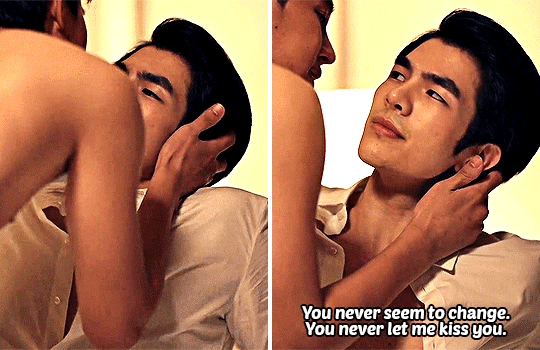
From an outside perspective, Porsche is the polar opposite of Kinn and the life he leads. When Kinn looks at Porsche, though? Like a mirror*, I think he sees the truest version of himself reflected back: bright, filled with joy and laughter and life. The man he would've liked to have been always, not just in small moments hidden away from judgmental eyes, and a life that doesn’t allow for anything less than absolute strength and perfection.
*I've mentioned many times how Porsche is like mirror in that he reflects back whatever he's given (or not given). I think the analogy applies to Kinn's experience beautifully, just in a completely different way.
The first time we see Kinn smile- and I mean, really smile- was with Porsche on the dance floor. He felt comfortable enough in Porsche’s presence to drop the facade and allow himself to get carried away in pure, simple joy. When Kinn leaned in to kiss Porsche on the dock, he moved toward him like he was a magnet- a flower stretching toward the sun. And who wouldn't after meeting someone who personified everything you wanted to be while simultaneously being so incredibly easy to love?
It is perhaps when our lives are at their most problematic that we are likely to be most receptive to beautiful things. -Alain de Botton

Despite every logical reason why he shouldn’t have gotten involved with Porsche, of all people- who drove him borderline insane in the beginning, to boot- shadows can only resist the sunlight for so long, or all the life and new possibilities its warmth brings with it.
I think this is the unique appeal of Porsche to Kinn: when he sees Porsche smile that megawatt grin or throw his head back with full-body, unrestrained laughter, he doesn’t just see the best parts of himself. A hope for more- for just one more taste of this delicious, new sort of life- starts to grow there, too.
I see you, beneath the surface. I see your untamable wild. I see you… You are seen. You are seen. You are seen. And my god- you are beautiful. -Jeanette LeBlanc
We all crave the feeling of being truly seen, romantically or otherwise- to have someone intrinsically know us, who easily sees through our all niceties and public-facing facades to the soul underneath. Porsche does this for Kinn just by virtue of being himself. And for a man who’s had to be everything but himself his whole life? That’s everything.
In a world where dropping your guard could mean death, just being in Porsche’s presence must feel a little like freedom to Kinn. Porsche is likely one of the realest, most straightforward people Kinn’s ever encountered: he can’t be bought, he doesn’t need or want anything from Kinn, and he’s violently (affectionate) himself at all times. That kind of unapologetic authenticity would be pretty attractive to most of us, let alone to a man with a past and upbringing like Kinn’s.
The Kinn we meet in episode 1 seemed to be carrying the world on his shoulders- like he's already lived several lives, all of them filled with constant danger and betrayal. Porsche having a tattoo of the symbolic representation of resurrection- of life after death- couldn’t illustrate just how much he means to Kinn more beautifully.
When we hold each other in the darkness, it doesn't make the darkness go away. The bad things are still out there. The nightmares still walking. When we hold each other we feel not safe, but better… For just a moment or two, the darkness doesn't seem so bad. -Neil Gaiman
Kinn in love is practically lit from within, radiating childlike joy. The more Kinn and Porsche find meaning and connection with each other, the more we see the truest, most fundamental version of Kinn emerge- and it’s a beautiful thing.

There’s nothing performative in the least between them; no metric of perfection Kinn needs to meet first to earn and keep Porsche’s affection. The tender, kind, softer side of Kinn isn’t just seen by Porsche, but celebrated.
There's some sad poetry here, too- in Kinn experiencing carefree happiness like this possibly for the first time (or for the first time in a long time), if only his world were different.
While the grim realities of Kinn’s world probably never completely disappear when he’s with Porsche, his love makes the darkness more bearable- worth the struggle, even. The world lifts off his shoulders for a minute, and for the first time in probably a good long while, he’s Kinn- just Kinn.
I know you’ll speak no truth at this time. I’m to be guided solely by your silence, your eyes & the inaudible appeals of your heart. -Suman Pokhrel
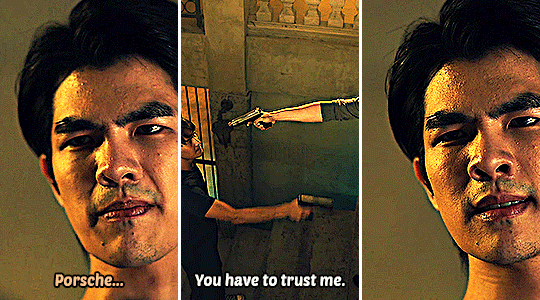
Kinn has been brutally betrayed in the past: his struggle (Porsche’s, too) will be in letting himself go and allowing himself to trust. That sounds pedestrian enough- who doesn’t struggle in some way or another in letting other people in?- but this is going to require a monumental amount of vulnerability for a man in Kinn’s position.
It’s the equivalent of a lion going against his every instinct to willingly expose his throat, only to then show you exactly where to make the killing cut. He’s had a lifetime’s worth of lessons taught to him by his father, his environment and his own lived experience, all working against this fragile, beautiful new connection he’s found.
With everything Kinn stands to lose- and the losses and heartbreak he’s survived to get here- the fact that he can love and hope at all is a testament to his incredible inner strength.
It also makes his every surrender to Porsche’s love- big and small- that much more meaningful.
(I'm sure I could've wrapped this up more poignantly somehow, but I'm 8+ cumulative hours in at this point & now the flu** is trying to kill me, so. hope you got something out what feels like a giant nothing burger to me at this point 🙃)
**edit: that flu? she was COVID. I feel like one of those fan fic writers that apologizes in the notes for being late on posting the chapter because they gave birth or something, except I, uh- finished this while hacking up a lung? ignore me; I have a fever)
#kinnporsche#kinnporsche the series#kinnporsche meta#kinn theerapanyakul#kinnporsche edit#& now i collapse 👋#mile phakphum#apo nattawin#tonanons#userspicy#userjap#usernuria#uservik#userjaehwany#tosnimeat#kinnporschesource#thai bl#bl drama#kinnporsche*
478 notes
·
View notes
Photo

Guide to that elusive “PS1-pixelated-lowpoly”(but not really)
With the videogame playing population growing up we've finally broke from pixel-art nostalgia into the broadly called "low-poly" nostalgia. On closer look this broad categorization gets further described as “PS1 pixelated textures low-poly”, which is a bit better, but still is a really broad and a pretty wrong description of this style that’s so dear to a plenty of game-playing and game making individuals these days. I’ll try to dive into some of the technicalities and examples of this style in the attempt to find it’s characteristics and some actual technical requirements to meet this style.
Let’s start with the obvious, calling it PS1 low-poly is wrong, mostly because the same games were release on Nintendo 64, Dreamcast and PC. More so, games released later can be put into the same category, plenty of NDS or PSP games fit into the same style and adhere to the same economy principles. The only real surface level thing unifying these games is the game size, that is, the games came on CDs. The advent of a DVD format really changed up how the games look, so the graphical style we’re talking about here is called CD-3D in smaller circles.
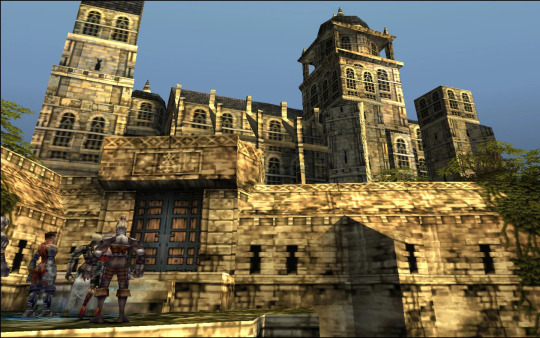
First let’s look at the games that fit the criteria would give you some information to describe the style, textures are obviously small enough to have visible pixelation (hidden by texture filtering) and models are obviously low-poly (that is around or less than 500 triangles for a character), but let’s see what doesn’t seem so obvious. Here’s Spyro and Crash, fan favorites
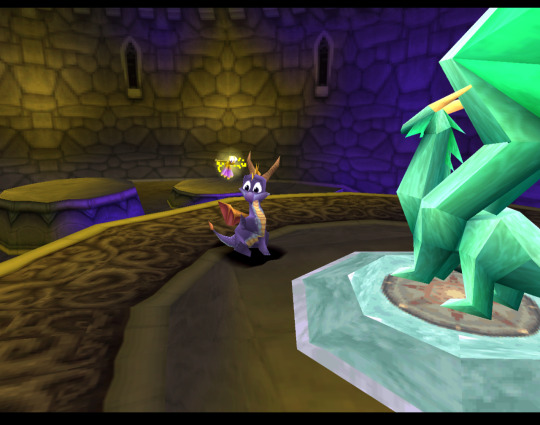

Both games check both points we’ve noted before, but what’s not obvious to an untrained eye is that these games both extensively use Vertex Color, the thing you’ll notice more and more in other games we’ll talk about. Vertex Color is absolutely simple, each vertex of a mesh can be assigned a RGBA value and they’re then linearly blended with other vertex colors. Notice how in Spyro the yellow and purple light is placed on places where texture is repeated, following that you can eyeball where the wireframe is and then you’ll see that the vertex color is used to simulate lighting. Crash himself is filled with Vertex Color, it’s a cheap way to avoid using textures, while having some control over the color of the thing, instead of it being a solid chunk. If you search-engine around you can also find some really fascinating notes on the development of the original Crash and the tricks they’ve pulled! The more ingenious way to use Vertex Color is to take a look at Spyro skyboxes:

Notice how the clouds are diamond-like in shape and are linearly gradiented to the next point in the wireframe.
Vertex color was used extensively and fell off with the increasing complexity of the meshes, delegated mostly to technical masking of stuff like foliage, it’s still a powerful tool for lower triangle counts.
Textures
Now, let’s talk about the textures. Pixelated textures look nice and crisp these days, at the age of 1080p being the norm, turning texture filtering really makes the games look crisp and feel right
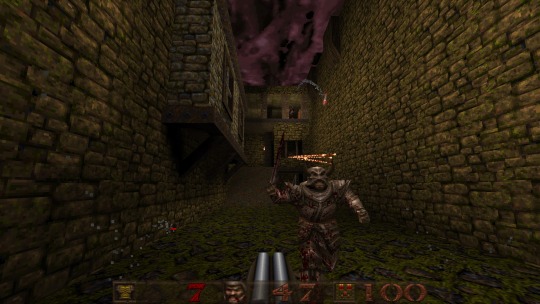
Quake 1 is a perfect example of CD-3D style, often undeservingly forgot in discussions about this style.
But this makes us forget that the textures were often authored with texture filtering in mind. Careful step gradienting to make textures seem smoother after being filtered is a craft in itself.
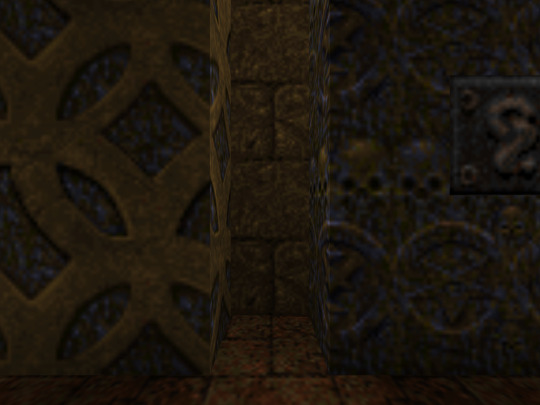
Texture filtering is not bad in itself, some games look better without it these days, because of the display resolutions, but it’s still a valid tool to apply, it can help push low-res texture a bit higher and produce a softening effect make those 4 pixels into a round circle or improve a visual effect.
Of course, some games took a deliberate approach of avoiding smudged look, like Megaman Legends, for example.
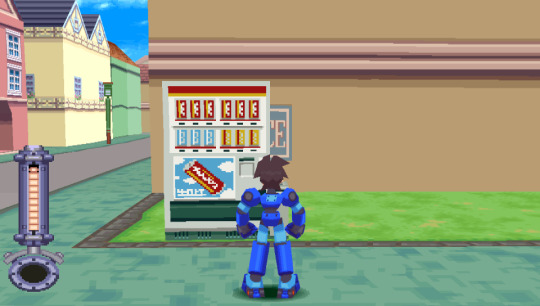
Via a very deliberate texture economy and unwrapping the developers were able to produce very crisp and pixel perfect textures (slightly warped by the infamous PS1 rendering), that look absolutely astounding when you render the game in a modern resolution. Pixel-aware UV Unwrapping, is being used in most games that are considered the pinnacle of CD-3D style, this technique is so powerful, that it was used to great effect in PS2 era games, PSP games and even modern games like Guilty Gear (for a different effect though). Let’s take a closer look,
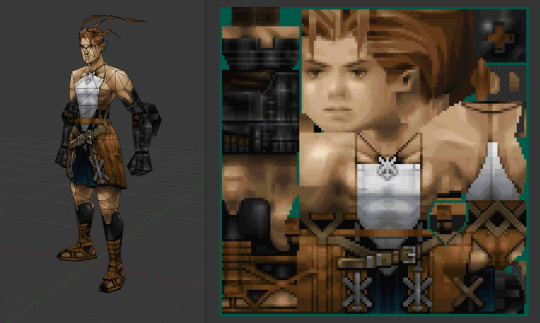
As you can see, our character is unwrapped in square pieces in such a way that a straight line on a texture will produce a straight line on a model. While Vagrant Story is an absolutely perfect in execution of this technique, it’s also used in a same way in Megaman Legends
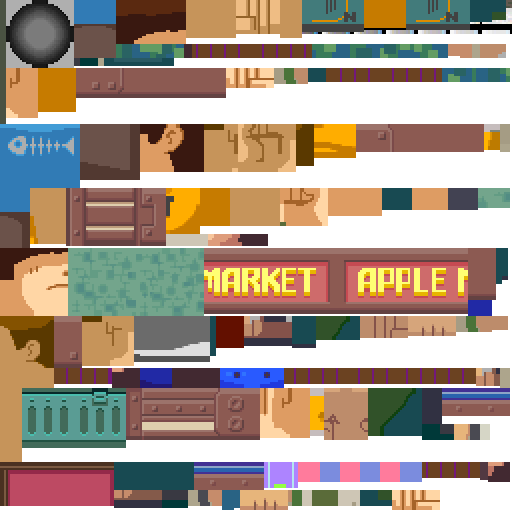
While I couldn’t find a reliable tool that works with modern 3D modeling software to allow pixel perfect alignment, just using a UV Checker will produce great results. This method also requires some thought put into your topology before unwrapping, but it’s strong point is that you can make changes into your unwrapping and geometry easily, making little tugs won’t break the whole thing.
As you can also note, Vagrant Story textures are authored in a single atlas, while Metal Gear Solid separates this atlas into smaller chunks like this:

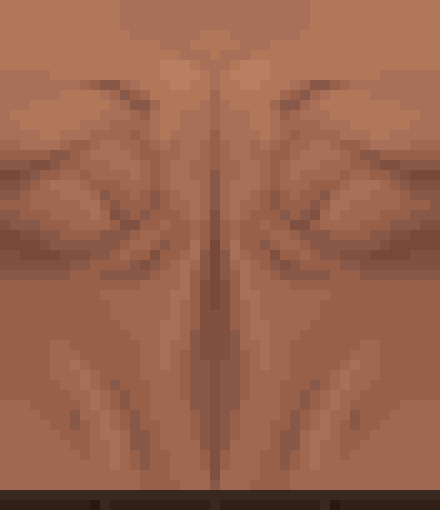
Allowing for easier unwrapping, since you can unwrap into the full UV space and then change the size of the texture to scale your results. The other important thing is that you probably want your characters in a T-pose when you’re unwrapping, since this allows for easier use of normal based unwrapping, considering your model would be authored with 4 to 8 sides for limbs and torso it could be box unwrapped and then tweaked for optimal results.
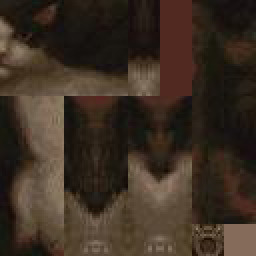
Silent Hill 1 used the same technique, and is also regarded as one of the best looking PS1 games.
While this is the best practice for this kind of look, it’s absolutely not required, Quake 1 used a really loose flat unwrap:
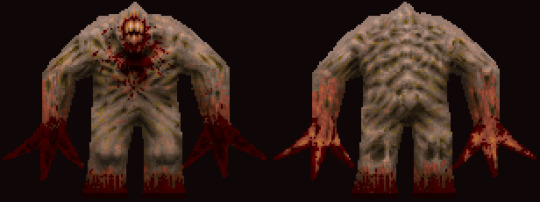
But it’s still looks bloody amazing in the end.
While the topic of using UV Unwrapping for crisper result is endless I’d also love to bring your attention to a certain Jet Set game
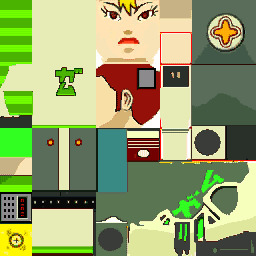
It also uses the same technique as Megaman Legends, but it tops it off with some cel-shading, producing crisp, stylish and iconic look.
Here’s some technicalities: Character textures are usually 256x256 for main characters, 128x128 for other characters, character usually have ~100-120 colors per full atlas. MGS breaks down the atlas into chunks so each chunks is usually 8 colors. So when authoring textures, make us of Indexed Color image mode or Save for Web.
Now let’s move from character textures to
World textures
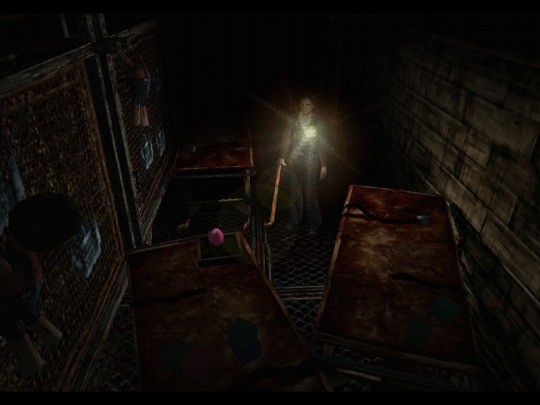
Universally regarded as best looking CD-3D games share the same trait, not only the characters look amazing, but the environments too. Despite hard limitations, the environments look very much affected by lighting. A lot of the times this is achieved with this one simple trick that was only improved with modern technology. That is, a lot of the lighting is baked into the textures
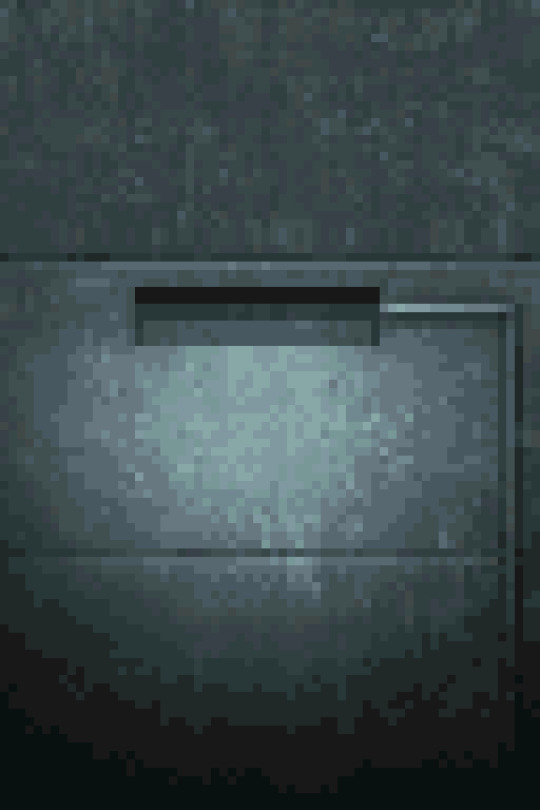
While this limits you on the amount of lighting scenarios or makes you produce more same-ish assets this certainly elevates the look. While nowadays baked lighting is not something that exciting, it’s also being done on a separate “layer”, so there’s no need to make a separate texture for every lighting scenario, however the resolution of a lightmap should not be higher than your texture, to not produce a cheap and uncanny effect. You still want to bake some fake lighting into your texture, which contradicts the rules of PBR, but since you’re not using normal maps, rules of PBR should not apply in the same way.

The other important tool to use, is the one we’ve talked about, that is, Vertex Color. Vagrant Story uses to great effect, while it’s environment textures don’t have lights baked, they use vertex color extensively to create a variety of moods and lighting scenarios.

Using best texturing practice, Vertex Color and making sure your lightmaps are matching resolution to your textures will produce the best results.
Now let’s talk why I don’t advise using a lot of normal maps for this style. The simple answer, it’s somewhat difficult to produce a normal map that will work with an unfiltered look, but it’s somewhat manageable to do it if you’re using texture filtering. The issue arises when you try make your normal maps unfiltered, this will make your result either a mess or a bunch of visual noise. If you’re trying to make sharp pixel-perfect textures and then will try to make normal maps to match you’ll get very harsh results. The only way I can see it working somewhat nice is to make a normal map that’s less detailed and then use it texture filtered to give some volume to your objects, while not trying to chase pixel details.
The suggested method is to do a rough sculpt -> bake it down -> use ambient occlusion and other masks to author a texture map with more details. Then use a detailed texture and less detailed normal map for optimal result.
As a closing thought, let’s talk about the
Meshes
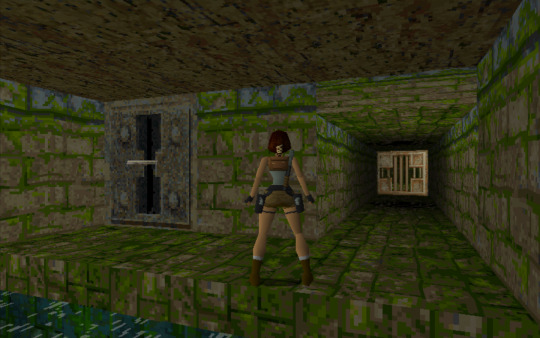
A lot of the time you can visually trace the wireframe of things, this makes it easy to pin the style as “low-poly”, but how lowpoly it really is?
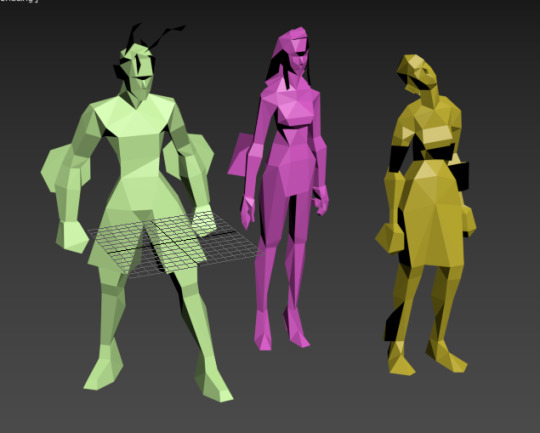
Characters in Vagrant story average 500 triangles per character. Characters in MGS go from ~450 for minor characters to ~650 for major characters. So 500-600 triangles is a solid baseline for a main character in a third person game.
This limit brings out some great restriction for every aspiring 3D artist. You have to know your limb deformation techniques (search-engine “Limb Topology” and browse around the polycount wiki to find some great examples and deformation ready examples), but as you might’ve noticed, some games decided to not wrestle with skinning and deformation and straight up detached the limbs or even made their characters out of chunks. This is perfectly noticebla if you compare the OG Grim Fandango and the remaster, where they botched the shading and you can see the bits in all of their glory.
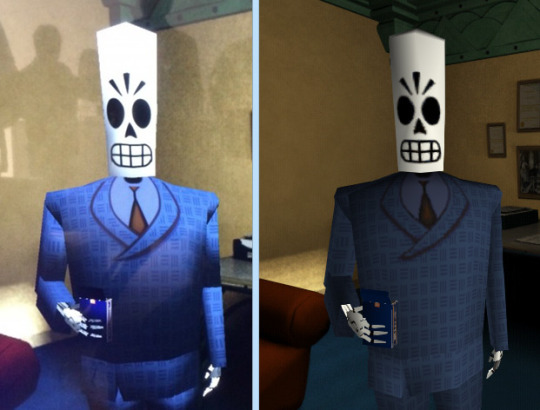
Another easy example is Metal Gear Solid. Characters arms are separate from their torse, but this is covered with other geometry or they’re of the same color and shaded closely.

This way of doing it was used in a number of other games and allows for unlimited range of motion, while not looking weird.
It’s easy to fall into the trap of adding more triangles and loops, but if you’ll follow the rule of “if it doesn’t add to the silhouette, you don’t need it”, you’ll keep to the style. Zoom out often and if an edge doesn’t add anything from the distance and is not critical to the deformation in a character, you really don’t need it.
These principles are so solid they’ve been alive for decades, in fact, one of the best looking PSP games “Peace Walker” sticks to these principles very closely, for example this soldier is just around 1500 triangles
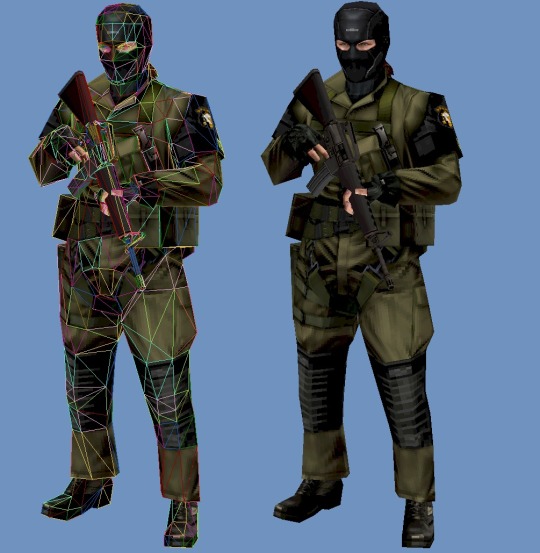
Spilling out of the “low-poly” territory it’s still made with the same economy principles used in CD-3D style, making use of every bit of texture and every triangle available.
Here’s another game of Metal Gear variety, Metal Gear Solid 2 is a direct heir to the design philosophy of MGS1, perfectly pixel-aligned unwraps allow for crisp detailing:
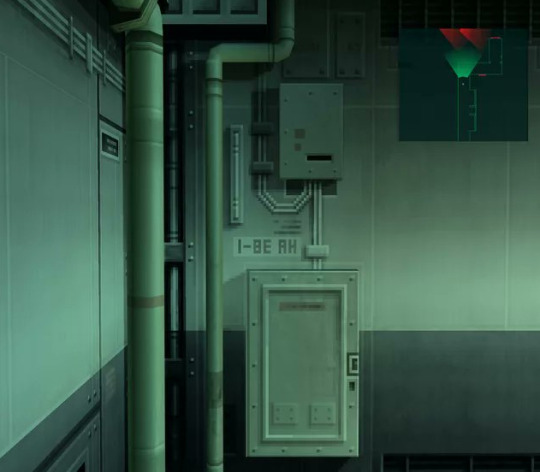
Another honorable mention goes to Animal Crossing on Nintendo 64
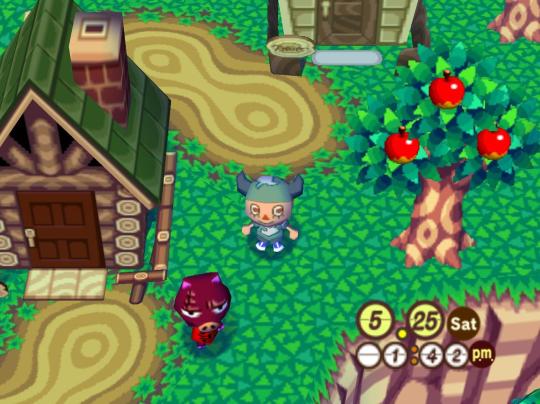
Animal Crossing combines meshes and sprites masterfully, uses pixel-aligned UV unwraps and makes up their own trick when creating landscape.

By unwrapping the repeating texture on each triangle of a hexagon they create these smooth patches of sand without the need for big or unique textures. It’s only 64x64 and 9 colors, but the mileage you can get out of it is insane!
And this honestly sums up the CD-3D style perfectly, it’s the style governed by economy. There’s no need for insane textures for sharp lines, and millions of colors for smooth gradients. Now of course all of these are not rules, but recommendations, you can certainly bend the rules and improve on some aspects. Before we go, here’s some more pictures to get you inspired.
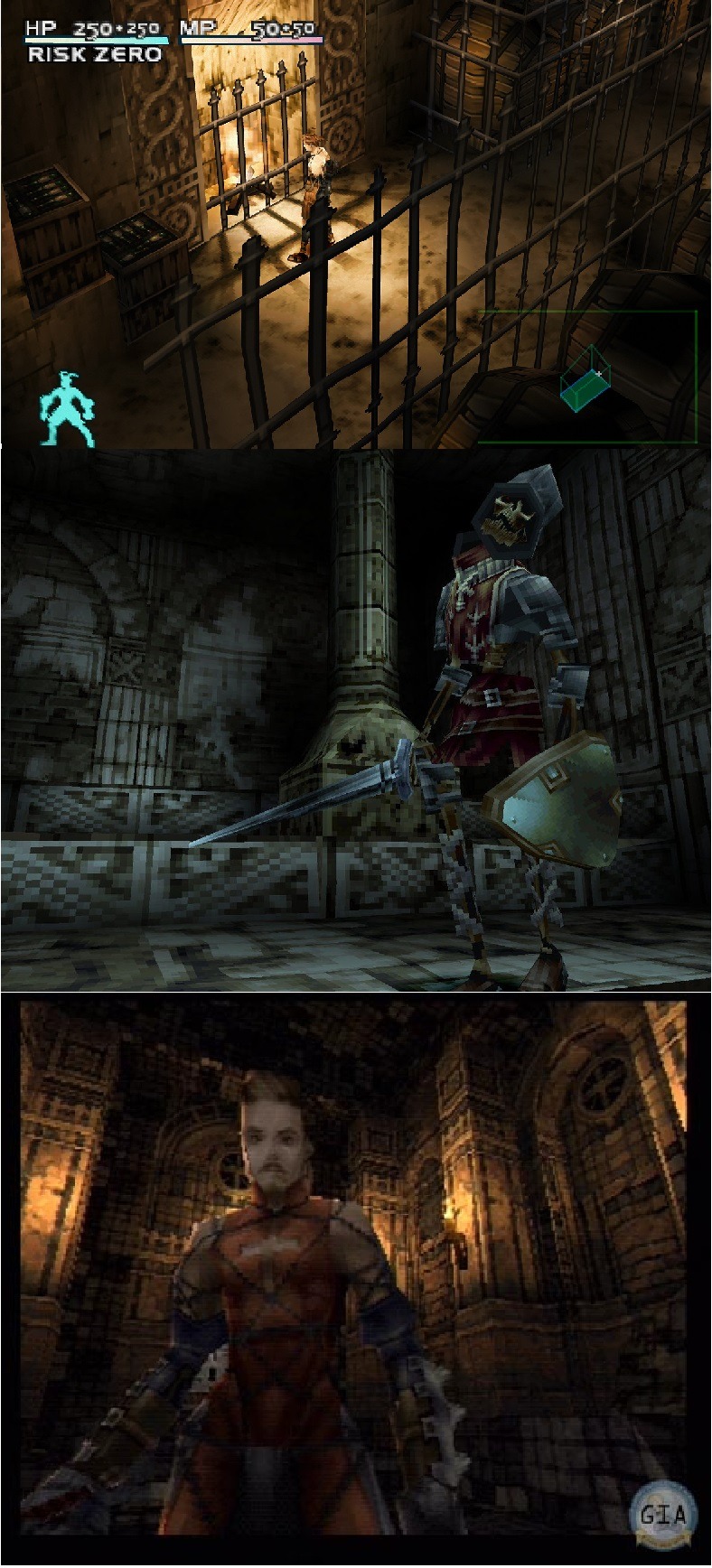
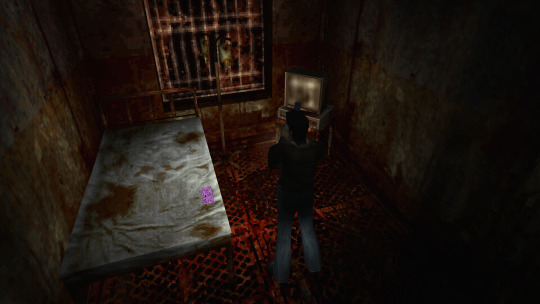
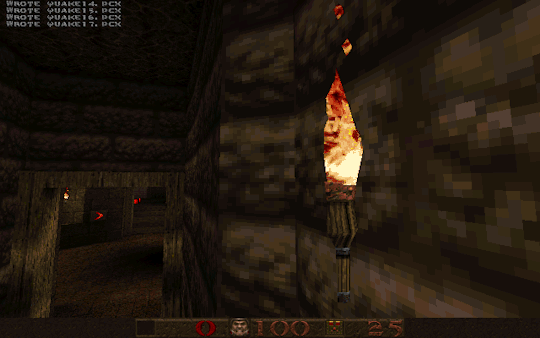

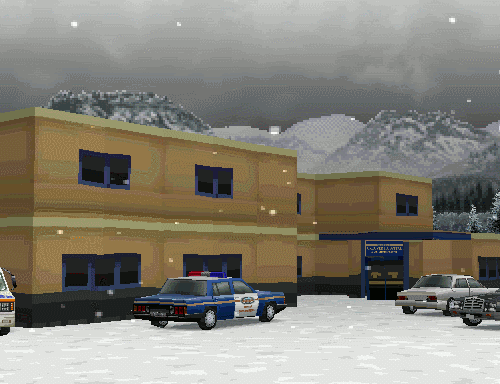
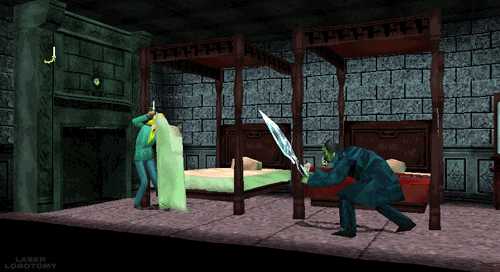
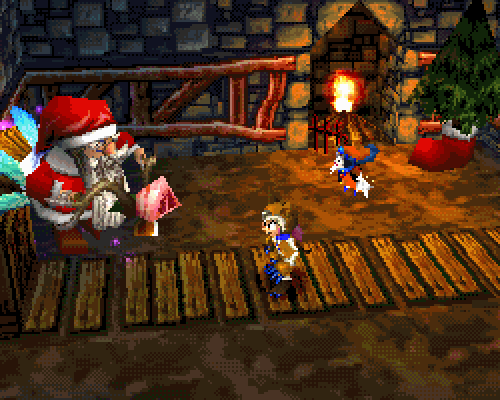
#playstation#psx games#psx#nintendo 64#low poly#3d#retro aesthetic#pixelated#gamedev#dreamcast#cd3d#retro
6K notes
·
View notes
Note
How do you make a good OC hetalia nations?
1. Research Seems cliche, but a hetalia OC without research is just...an OC. You’re trying to represent a whole country with a person, so designing a character and then picking a country for them to represent is...not it. You need to actually look into the country’s history and understand how it got to where it is today, what factors influenced its history and current society. Understand why it gets along with some countries and doesn’t with others. And yet this can’t be the only thing you research. I think researching the history and relations is a good baseline but that ultimately does not result in a good character on its own. You need to also research what the people there look like, what people there tend to wear, any common stereotypes (positive or neutral, not negative/racist ones please), cultural norms, etc. I’ve seen plenty of profiles that had obviously had a lot of research put into them, but they read like a wikipedia article for the country. The character themselves just seemed bland, because the creator spent a lot of time on the history, relations, and facts, but not a lot on actually developing their character.
2. A Personality
So that’s really where the other stuff comes in. What are people there generally like? What cultural norms drive morality and society there? It is like Japan where there’s a heavy emphasis on honor, politeness, and working as a group? Is it like America where individuality, strength, and hard work are highly valued? Those are the kind of stereotypes playing into the personalities of Hetalia characters, and those should kind of be the baseline when figuring out what kind of person your OC should be.
And then--just make the character interesting. Stereotypes shouldn’t be the only thing making up their personality. All the Hetalia characters have their little quirks that make them unique, like Prussia keeping a diary or Canada being a fan of Naruto. Don’t be afraid to give them interests beyond stereotypical things people from their country would do. Don’t be afraid to give them relatable, human trait that make them unique and stand out as an individual. Look at their history and think what things might have left an impact on them, for better or worse. Incorporate that into their character!
That’s why the OCs that read like a wikipedia article are boring. You’re telling me what the country is like, not what the character is like. Your character should believably be able to represent someone from that country, but I should also be able to believe that they are an actual person! They should grow and develop and learn from their mistakes, have heartbreaks, have joys and things that are important to them, just like anyone else.
3. Design
I already talked a little bit about researching what people from the country look like and dress like. Even if your character is their own individual, they should still look like someone I would reasonably expect to find in the country. If there are cultural hairstyles that are common, consider giving one to your OC. If people in the country tend to dress modestly, perhaps the OC dresses in the same manner. Race and ethnicity can get complicated and there really is no one-size-fits-all method to determining what ethnic groups your character should represent or what features they should have, but I would highly recommend against making your OC half-(insert colonizer here) for “historical reasons.” (I am mostly talking about things like making Laos half French btw). I really have never seen that sort of thing done well. If anything it tends to make the focus the colonizer’s influence rather than the influence of the culture that existed before the colonizer’s arrival. Don’t fall into the trap, unless there is a very, very good reason, like total death of the civilization that came before and replacement by the colonizers/immigrants, or the intent of the OC to represent colonial populations ONLY (like intending America as “new world” settlers, and personifying Indigenous Nations as separate characters completely).
Another thing about physical design is to try and make it interesting. Traditional costumes and unique uniforms are always good. Plain colored shirts and flag design hoodies are...plain, predictable, boring. Look up some fashion from that country! Dress them as something someone from their country might be interested in! (Australia wearing khakis like Steve Irwin, or America wearing a bomber jacket because the image of a Top Gun pilot in a jacket and aviator glasses is just...very very American) But, also try and keep it realistic and don’t go overboard trying to make your character unique or representing too many things at once. Slapping 3 different curls on them and giving them heterochromia is overdoing it.
4. Relations
You should get a basic idea of how the country gets along with others by researching its history. Common allies are most likely friends, common enemies, at least a rivalry or possibly some disdain between the two (if not outright hatred).
One thing I want to emphasize is to let the OC be their own person though! Don’t define them by their relation to someone else. Isn’t it annoying when someone greets you with “oh, you’re ____’s kid!” instead of your name? I feel the same way when I see an OC described as ____’s child/sibling. Especially if there are plenty of history and culture and things that make that country unique, but the creator has chosen to focus on that time the country was colonized, or part of a union. That’s not to say your OC can’t be related to a canon character, but don’t force it just so you can have a certain family dynamic. Sometimes countries that are close are just friends or neighbors, not family. Let the country be their own character rather than make them an extension or an accessory to another!
----
This is getting long, but I think those are things people should consider when making a Hetalia OC. Long story short, the character should be someone I would expect to find in that country, but who is also their own individual who I could really see existing!
159 notes
·
View notes
Text
On Lord Hawthorne

A lot of what makes Lavender Jack special to me is the way it’s so masterfully able to create engaging, modern material out of it’s influences, and it’s creation of a genuinely timeless pulp icon that I think should serve as the ideal baseline for any and all creators who want to create stories based on pulp characters, old and new alike, in the future.
As I make my way through Season 2 and eagerly await Season 3 I’d like to take the time to talk a little about the often overlooked half of the villain duo of Season 1, Lord Hawthorne, and what I think is interesting about him. Out of the many ways pulp heroes have been reimagined into villains over the decades, Lord Hawthorne stands out to me as easily one of the best ones, as a thoughtful take on the Tarzan character.
Spoilers before the cut

The first thing everyone immediately picks about Lord Hawthorne is that he’s Tarzan, with hardly any ifs or buts about it. He’s Tarzan, and we quickly learn that he’s the villain, part of a villain duo with Lady Hawthorne, the real mastermind and kingpin in pearls behind the story’s events. Having Tarzan as the villain n a story that draws from pulp and Edwardian fiction is already an interesting start, as three of the most popular molds from which are pulp heroes are based on, three of the most popular characters as icons, are Tarzan, the Scarlet Pimpernel, and Sherlock Holmes, all three of which exist in some capacity in the world of Lavender Jack. The Gentleman Villain, The Great Detective, and The Wild Man.
Lavender Jack, as I’ve mentioned, is based on the Pimpernel, as well as other figures such as Spring-Heeled Jack and Bertie Wooster. Jack draws from icons that largely predate the pulp heroes because, in Schkade’s own reasoning, if you’re going to try and create an authentic pulp hero, it only makes sense to use as a base the characters that largely inspired them, and clearly that worked out very well. Jack is a Pimpernel remodeled and recontextualized into modern sensibilities, into an era of superheroes and webcomics.

In the Great Detective’s case, we have the figure of Madame Theresa Ferrier, who is called into the story by the Mayor to try and solve the mystery of Lavender Jack’s identity. Schkade describes Ferrier as a character that pulls from elements of detectives like Hercule Poirot and C.Auguste Dupin as well as Sherlock Holmes, in particular Jeremy Brett’s later year performances. As he describes:
In the series’ final years, Brett was getting older, sicker, hindered by bipolar medications that sapped his energy and caused him to gain weight, and he used it. His Holmes became a fading, melancholic shadow of his younger self, but with the spark of his brilliance showing through when it counted. I always found that so compelling
Ferrier is repeteadly described in-universe as “The Great Detective”, and she is both the oldest as well as the most brilliant character in the comic. Despite her age, despite her physical complications, and the tragedy that surrounds her love life, she is nonetheless incredibly skilled, strong and resourceful, able to unmask Jack and survive a confrontation with Lord Hawthorne and even nearly beat him. Ferrier draws from the Great Detectives of old, but this is a character that could never be mistaken for any of them. She’s not specifically based on any of them because, as Schkade puts it: “I wanted her to be someone I’d never get to draw in a leading role in most of my work-for-hire jobs”.
Her role in the comic ends up being one of mentorship to Jack, and despite her age being emphasized as well as the idea of her belonging to an older generation of great heroes that now gives way to the younger and hot-blooded Jack as well as Ferrier’s new partner in Honoria Crabb, Ferrier is very much another great example of where the old meets the new in Lavender Jack. Pulling from the great old archetypes but very much recognizable as her own thing.
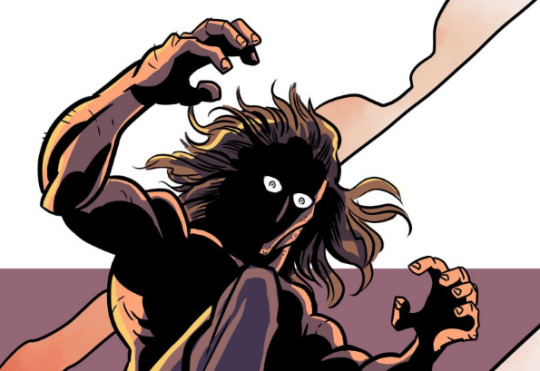
Thing is, when it comes to Lord Hawthorne, we don’t really get that, because Lord Hawthorne isn’t really combining the idea of Tarzan with a splash of something new and outstanding and modern. He really is just Tarzan, and not a terribly layered character at that, for much of the story he’s largely just a voiceless bulldozer who exists to do the dirty work of Lady Hawthorne no matter how dirty. This isn’t at all a criticism, because I think Hawthorne being just Tarzan, with little to no bells and whistles and twists on it, is central to what makes him work not just as a great physical threat Jack must overcome (in a similar way to Bane as both a monstrous powerhouse and also having a strong connection to a powerful pulp hero), but also someone whose tragedy comes to light as we finally learn more about him. The fact that he is monosyllabic and largely devoid of any personal interests or life outside of being muscle for Lady Hawthorne is something deliberate, as outlined in a speech given by another character in Chapter 39
Her world's been changing for years, now. She's taking her place in a wider game. A more nuanced game. And you're still...Why, you're only good for one thing, aren't you? Well, maybe two, you old hound, you.
I know why you spend vast stretches of the year off in that jungle. It's not for sport, it's not to keep your edge...it's because when there's no need to fight, no struggle to win, no enemy...there's just...you.
And you know there's not really anything to you, underneath all those scars and muscles.
No dreams, no warmth, no depth. Nothing to love.
So you stay away...and that way, you can come when she calls you. You can sweep back to Gallery and show up all filthy and draw her into your powerful, savage embrace....and maintain your novelty.
All of this so you'll never have to endure a silent sunday afternoon where there's nothing to do, any no one to kill, and your lady simply...doesn't...need you.
You do know this word, don't you, Hawthorne, old fellow? "Novelty?"
And how does he respond?
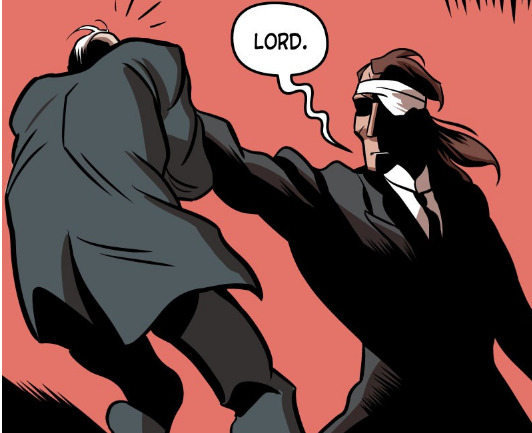
Not with a denial, but an affirmation that this is ultimately all personhood amounts to, in his worldview. Just one more thing to be conquered and then used as a club to batter others with.
The very act of a character questioning their own worth and depth of personality usually tends to be a telling sign that they, in fact, have those things even if they are out of touch with them, but Hawthorne doesn’t particularly rebuff anything Van Lund’s saying. He just reaffirms his title as Lord while threatening him with violence, because violence is all he knows.
As we later learn, Lord Hawthorne isn’t, in fact, the real Lord Hawthorne, but instead he and his wife usurped the title from the real one as they escaped from the jungle, where he was only known as “the wild man”. A man who’s been forced his entire life to live in a kill-or-be-killed world, to live as an animal in constant conflict with humans, was then captured and then brutally tortured every day for over a month, and then found for the first time someone who treated him with something resembling affection, someone who ultimately turned him into a tool for her evil designs, and he readily accepts this because he has no life, no identity, outside of her. He doesn’t even know his own name.
In fact, for all we know, he might as well be John Clayton himself, except he was born in a world where being Tarzan is not the greatest thing ever and there was no Jane or ape mother to guide his malleable heart into something resembling good, and there was only Sarah to mold him into an instrument of murder at his lowest point.
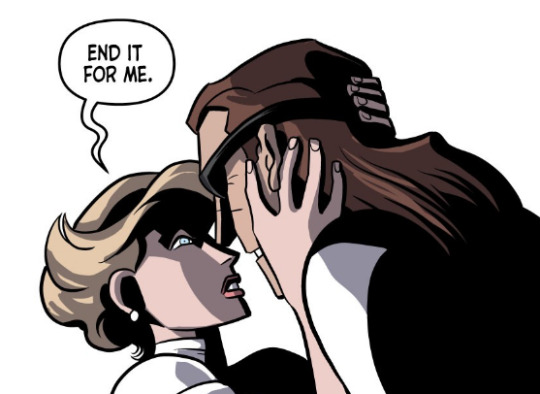
I argue that Tarzan is a character that’s all about freedom and vitality, as a heroic take on an archetype that’s long been the missing link between superheroes and monsters, where the dual nature of mankind between person and ape acts not as a disorder or source of conflict but instead as the ultimate power fantasy in a character who gets the best of both with none of the downsides. Lord Hawthorne isn’t necessarily a return to form, because there is no dual nature to him. There is no gentleman, no Lord Greystoke descendant of nobility, romantic hero and great adventurer and leader of men and whatnot. There is only the ape, and what little façade has been grafted onto him by his master so he can pass off as a person, only long enough until he takes his shirt off and starts murdering people for her. While we get long extended close-ups of the icy cruelty in Lady Hawthorne’s eyes, there is none for Lord Hawthorne, because he is not cruel, he is an animal. He’s not a fighter, he’s a survivor. He lives to kill and serve the person who tells him who or what to kill.
Lord Hawthorne is what happens when you strip the Tarzan legend of the romanticism of fiction and you look at it for what it would likely result in: the tragic story of a child forced to grow in the jungle, where the concept of personhood and human decency are utterly meaningless and there is only survival, where his existence is at odds with the worlds of man and animal alike, and what happens when that sort of being receives a first contact with something resembling decency and love. Even if said first contact wasn’t with someone as evil as Lady Hawthorne, there was little chance Lord Hawthorne’s life was ever going to be anything other than just an extension of his life in the jungle, or end in anything other than tragedy, and ultimately even the characters start to pity the wild man.
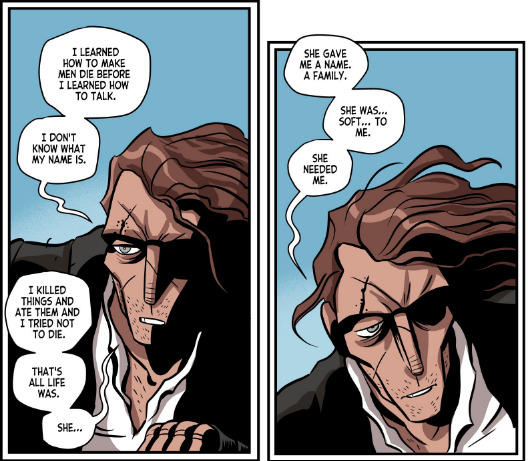
Jack: All that power and stamina and fighting acumen, but yet all you seem to get to use it for is...this. Another laborious climb to another locked-room murder.
Ferrier: You've long passed the point where human lives hold any meaning. You are detached from our species, a...a stranger, loose among us. I thought the sight of you would stir distain in me, or even fear...but as I look at you now...I feel for you only the strangest sort of pity.
What I like most about Lord Hawthorne as a take on Tarzan is that, far too often, we see intended “deconstructions” or reinterpretations of the classic pulp heroes, or even superheroes, that largely just make them villainous by extrapolating the worst possible interpretations of the character’s traits or real-life circumstances around them to villainize them, or outright invent faults and problems that weren’t there in the source material, usually to put one character over the other. The entirety of League of Extraordinary Gentlemen is built on this, as is a lot of Superman parodies built on getting the most graphically shocking results possible.
I'll admit it’s somewhat hypocritical of me to criticize this entirely, because it’s an impulse that I sadly admit I myself have fallen into in my own writings on characters not my own, as anyone who’s ever talked with me about Doc Savage, a character I do not like and cannot bring myself to like, can testify. I get why this happens, even if I understand why it’s shitty. Ultimately, the best “deconstructions” or reinterpretations will always come from people who are best familiar with the material they are using and know exactly the best ways to twist it, like with Mark Waid’s Irredeemable, an Evil Superman comic written by a huge Superman fan who knows exactly the absolute worst ways a Superman character can go sour, and was leagues ahead of works like The Boys and Brightburn who largely just take the “easy” pot shots.
With Lord Hawthorne, we get a character who’s an evil take on Tarzan, but whose evilness isn’t made from exaggerating or adding faults to the source material character, which could very easily be done. I never got the sense that the author hates Tarzan and wants everyone to hate Tarzan and is willingly to sacrifice immersion just to get across how much he hates Tarzan (again, something LOEG does way too often), in fact it really doesn’t matter how the author feels about Tarzan, because those feelings are irrevelant to what’s on the page.
Instead, Lord Hawthorne is an evil take on Tarzan whose characterization is largely based on just looking at the source material, the character’s origins, and extrapolating the circumstances in which that could go sour. What would a “wild man” forced to grow up and fight for survival every day in the jungle look like, what would that person look like when making it’s first contact with human affection, how could that person be twisted and manipulated into becoming a villain, what’s even left to that person outside of violent action scenes. How little it would take to twist a childhood hero into a brute that murders old women in their hospital beds, just by tweaking a few details about the context surrounding him.
He is not a caricature of Tarzan, he’s not a parody, he is just Tarzan, but no longer the power fantasy. No longer the center of fantastical adventures. No longer getting the best of both worlds, but instead having to contend with the worst of them. Ultimately only finding some dignity in death, with his nemesis expressing hope that, maybe somewhere else, he’s going to have better luck than what this world afforded him.
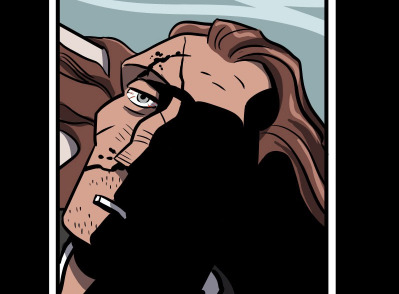
#lavender jack#pulp heroes#comics tag#lord hawthorne#dan schkade#far from my favorite thing about this comic but#that in itself should be a testament to just how amazing lavender jack is#please go read it
36 notes
·
View notes
Text
damn the brain be out here going BRRRRRR here’s the Laito and Cordelia Analysis (with a little bit of Karl sprinkled in) Part III
wow my fingers are freezing but my brain sure isn't!
aaaanyways, iiiiiit’s trauma time!!! Am I a productive member of society by writing these analyses? No. Do I gain anything by writing them? Kinda, my brain gets exercised and they’re fun to research for. But if you haven’t read the first part or the second part for some reason (I recommend reading them in order), there they are.
Once again, trigger warnings still apply; mainly about trauma, isolation, etc
I’m gonna talk about the trauma and effects it had on Laito and to attempt to extrapolate why he is the way he is. I have a lot of examples I want to go over and stuff to talk about, so I think the trauma part is going to be split between two (or maybe three) parts. I also have a little bit to say about Karlheinz.
As always, big ass rant under the cut!
Section 6: Neuroplasticity and Trauma
Oh???? More science vernacular??? You BET! Ok, neuroplasticity. I know I’ve talked about it on this blog. But, I seriously doubt that there is a madlad who has read all of my analyses (speaking of which, I should update the master list lmao) and I don’t expect anyone to do that LOL! Anyways, this neurological concept is the ability of neurons to adapt to certain circumstances or stimuli by creating new neurological pathways (through synapses). This basically relates to memory and learning. It’s why we don’t stay the same person as we grow and develop. It’s responsible from mindset changes to response to traumatic events. It plays a huge part in trauma, which is why “repressed memories” occur as well.
Trauma, taken from Psychology Today, is defined as:
...the experience of severe psychological distress following any terrible or life-threatening event. Sufferers may develop emotional disturbances such as extreme anxiety, anger, sadness, survivor’s guilt, or PTSD.
It’s a basic definition. And although I’d assume people would know what trauma is already, but knowing the lexical definition of something can be good to know before going into it.
Obviously, Laito has trauma, there’s literally no refuting that. But, the point I’m getting at, is the reason why he is the way he is today is because of neuroplasticity. As previously stated, we are going to assume the DL vampire brain works similarly or the same as a human brain. So, because of the stress put upon the brain (Cordelia’s actions and Laito’s general upbringing in a stress filled household), Laito’s brain was rewired (neuroplasticity). This section doesn’t really have much new information, but I wanted to give a baseline since there’s many people who don’t know what neuroplasticity is.
Laito’s definitely different than what he was as a kid. He still kind of had his smarts, and might have been but as we’ve deducted from the first part of this series, he might have been groomed. On top of that, the brain is easily moldable when you’re a child (which is why grooming makes sense for Laito’s case), and continues to snip brain cells off and form new connections.
Section 7: Little intermission about Karlheinz
I know I haven’t really talked about Karlheinz yet. So this will be the section that I do it in. I know this part is about Laito’s trauma, but it’s so hard to not just weave other characters into it. Nothing is stand-alone, which is why it was so hard for me to plan this out. I was debating about saving this for another analysis, but I feel like it fits.
I referenced this in Part II, Section 5 of this analysis series. Basically, Karlheinz throws Laito into the dungeon and locks him up. Not Karlheinz personally, but he ordered someone to do it. We don’t explicitly know why, but there’s several implications. A huge one is that it was part of Karlheinz’ experiment. Before Dark Fate, I was like “wait, so did Karl find out about Laito/Cordelia? And got like jealous or was like ‘nah this shit fucked up no thanks’?” I was really scratching my head on that. But in Dark Fate, you find that Karlheinz knew about Cordelia and Laito, and even really wanted it to happen. Which is all sorts of fucked up. This really put Laito in for a loop. Here’s a scene from Dark Fate:
Laito: That woman always, always believed in Karlheinz. Laito: She believed he married her because he loved her, wanted her. That’s why she was sure that one day... he will give his love only to her. Laito: But she was tricked. She wasn’t loved from the start... Laito: -And I’m a victim of this unbelievable mistake... That’s how it is. Laito: I was treated as a vent for her feelings. Yui: ...Laito-kun... Laito: I’m sure he knew that something like this will happen... He is a god after all... Laito: I was hoping that... He just overlooked it up until now... Laito: But... I was naive. Laito: I was only planned a scapegoat.
God, when I played this, that just freaking struck me to my core. That’s so awful. Ironically... Karlheinz probably has some high level of emotional intelligence. I don’t believe he could be labeled as a sociopath, considering he has this high level understanding of pathos. He’s not god in a sense that he controls everyone individually himself. He’s so good at manipulation that he basically creates fate itself (whether you believe in it or not). He’s generally intelligent and cunning, and it also just helps with the fact that he’s immortal and can time travel. He knows cause and effect by now, and I believe Lost Eden said something about how he’s done so many different “timelines.”
The definition of a god in a philosophical sense can be broken down into three words: omniscient, omnipresent, and omnipotent. More wicked cool jargon! Yay! Here’s what they mean for extra clarification:
Omniscient: All knowing Omnipresent: All seeing Omnipotent: All doing
Sure Karlheinz doesn’t absolutely know everything, nor can see everything, and he definitely has limits to his power, but he has gained knowledge through living for so many years and time traveling; he has familiars which add to the whole “all seeing” part; and he has a lot of power. So basically, in the most semi-”realistic” sense, it would definitely be the closest being to any kind of god.
Karlheinz is probably the reason why Laito himself has such contempt towards religion, and the existence of a god in general. Sure, the boys are like “that shit’s made up by humans” in general, but it would make sense for Laito himself to have that specific hatred. It makes sense that these vampires would be like “oh that’s made up by humans” when they’ve been around forever and have seen multiple religions come and go. (I’m mainly talking about in DL’s lore case, not starting a religious argument; please don’t take it as such––just to clarify)
Section 8: Isolation
Originally, the previous part was going to be about Laito’s isolation being locked up. However, I went off the rails and it turned into that little intermission. This is going to be a shorter section, but I still wanted to talk about, and it will weave into the next section.
There is no implications about how long Laito was locked up (and tortured) in the dungeon. There’s also no implications about why he was tortured. But torture and isolation puts such stress on the brain that there’s definitely going to be some kind of outcome if persisting for a good period of time. So let’s take a look at what that does to a person.
Once again, taking this with a grain of salt. I imagine vampires don’t need to rely on social interaction as much as humans do, considering they live forever. But we don’t know. However, throwing Laito into a state of isolation implies that it would be some type of torture or harsh punishment for a vampire, which therefore implies that social interaction is a necessity for emotional function. It’s just sound, inductive logic.
So now, as for isolation, I’m using this article as reference. It’s a pretty interesting one to read. Here’s another extensive article as well. Basically isolation can cause:
Depression/anxiety
Immune system deficiencies (basically more likely to get physically ill)
Sleep cycle changes (if put underground or with limited natural light)
Hallucinations
Paranoia
Issues with processing information and more susceptible to persuasion/manipulation
We have no clue if Laito’s experience fits all of these. Also, the second one can be crossed out because vampires in DL can’t get physically sick in the way we can. Also, unsure about the sleep cycle stuff considering they are used to being in the dark. Hallucinations and paranoia can’t be crossed off nor proven.
Being isolated physically and mentally exhausts the mind, which is why it’s also a way of torture. Laito implies that he was tortured with physical devices, but regardless, it’s still stress on the mind. This type of stress definitely goes along with what was mentioned with neuroplasticity and trauma, which also supports the last bullet point: issues processing information and being more susceptible to persuasion/manipulation. Take this flashback from Maniac Prologue in HDB that I used in Part II section 5 (but here’s even more context):
Laito: ーー Let me go!! Let me out of here! Butler: I can’t, young lord. We’ve received strict orders from your father. I am deeply sorry, but please stay put for a while. Laito: What’s the point in having me chained up in here!? Butler: ーーI am very sorry. Laito: Hahahaha…You stupid old man! Do you think that this will make repent!? How foolish! That demon! Has his brain finally rotten from spending too much time with humans!? ー Cordelia appears Cordelia: ー Oh? Laito: …!? Have you come to save me? Cordelia: Oh dear. Ufufu…I’m sorry Laito, that isn’t it. Laito: Eh? Richter: ー Why are you here? Laito: …That’s my line. Cordelia: Okay, okay. No fighting! More importantly, Richter…Come here. Laito: …!? Cordelia: Nnn…Hey, Laito. You are a good boy. Laito: …!! Cordelia: Right, Laito? Laito: Yeah, that’s right. I’m…I’m a good boy after all. ーー Besides, I’m the type of person who only get more aroused from this kind of thing.
Although I also use this to support the whole Stockholm syndrome point, this could also be supported with the trauma isolation also holds. His mind is being re-molded into the facade he holds. Also, note the whole “do you think this will make me repent?!” part. Just a very interesting thing. The word “repent” implies that there’s something to feel guilty about or the person knows that what they’ve done is bad. It just goes to show that Laito has some part of guilt or moral compass still in tact.
You can also argue that this scene was when Laito just got locked up, or he’s been here for a while. Either way, he could have also been socially isolated before this too, just hanging around Cordelia like it’s implied when he was a child. Remember the whole not being in bed 9/10 times when he was a child? Yeah, controlled social isolation. We also rarely see Laito with other characters in his flashbacks. I don’t believe we see him with his brothers in any of his flashbacks from what I can recall; he’s usually with Cordelia. Just implies (to me) that he’s around her a lot. And being locked up is also a more extreme case of that, which would mold the brain even more.
I know that was a LOT to process and read. I sure hope this still is cohesive for you all. I’m pretty bad at organizing this kind of stuff; it’s a bit difficult since it all just goes together. Which, kudos on the writers of DL, because that’s just good writing. I was going to put something about gaslighting in this part, but that might be too long, so I’m going to make that a separate part or include it in the next part.
If you have any questions, feel free to just put it in the inbox. I’m planning on making the last part of this series answering all the Laito/Cordelia questions I’ve received, or just general questions pertaining to this analysis in general, whether it be tangential questions or clarifying questions.
Hope you all are still enjoying this ride as much as I am! -Corn
#analysis#diabolik lovers analysis#diabolik lovers#dialovers#dialover#laito sakamaki#sakamaki laito#raito sakamaki#sakamaki raito
98 notes
·
View notes
Note
Comics this week (12/1/2020)?
calvatronlordofall said: Today’s comics?
Far Sector #9: Another comic I won’t understand until it’s done and I can reread the whole thing but that I’m enjoying anyway. Really, really hope Jemisin continues contributing to the medium in some form after this, because she absolutely has a gift for it.
Strange Adventures #7: He doesn’t care for tyranny, folks. And JEEESSSUUUUS, Doc
DCeased: Dead Planet #6: Some quality DC Comics nonsense problem-solving, but not sure at all whether the chips are gonna fall in favor of the stuff about this I’ve been really liking or the aspects I simply don’t care about at all.
Tales From The Dark Multiverse: Wonder Woman: War Of The Gods: While I’ve seen plenty of them around the periphery in anthologies and so forth I think this is Vita Ayala’s first full work I’ve been exposed to, and tbh I can’t say I’m taken, even given the pretty threadbare-seeming material for them to work with. I’ll still give Children of the Atom a try, but my expectations have been lowered. Nice seeing Trish Mulviihill’s colors though, thought they looked familiar and it turns out she worked on my beloved Superman & Bugs Bunny.
Batman: The Adventures Continue #7: Yeah, now that it’s all said and done, definitely the best take on the death and return of Jason Todd.
Batman #104: Art’s taken a hit, but Ghostmaker’s getting more and more fun as a character the more that comes out about him. And surprising seeing Dick in his real Robin suit in flashback, Dark Designs had him still rocking that New 52 abomination. It really seems like the policy RE: costumes in flashbacks with him remains up in the air at any given time?
Anonymous said: Thoughts on the long-awaited BatCat?
Anonymous said: Bat/Cat the objectively best comic of the week. Thots.
Batman/Catwoman #1: I imagine disappointingly, quite few - both the best and worst part of this book is that King’s entire spiel on “This is gonna be such a different animal from my regular run, this is my DKR, this is my ultimate prestige statement on the characters” was pure hype, this is just the next issue of his Batman run with Clay Mann as the new main artist. And it’s good! I like it! I think it’d take awhile for anybody to tumble onto the ‘three timelines’ aspect of it if they didn’t go in knowing about it since the color of Catwoman’s suit is the only obvious tipoff for a chunk of it, but it’s still a well-constructed piece of comics in line with the story up to this point, even if it’s so in line with it that it pretty much puts the lie to the notion that this was originally conceived of as a special prestige project in the same way as Strange Adventures or Rorschach. Mostly I’m just struck now that it’s out by the guts of doing a straight sequel to Mask of the Phantasm, given that’s maybe the singularly least divisive major Batman story: everybody on every side of the Batman-loving aisle recognizes it as hallowed ground, so nobody’s gonna not be let down if you fuck it up. I really need to rewatch it, it’s been well over a decade and unlike Return of the Joker my memories of it have almost entirely faded.
Black Widow #4: The further in I get the more I’m struck by the cleverness of the central conceit. How do you construct a drama around a century-old woman whose business has her have to mostly forsake most normal human connection? Make the literal supervillain plot that she’s been forced to have incredibly intimate human connections, and now she’s just gotta deal with that on top of what would otherwise be fairly routine Black Widow stuff.
Miles Morales: Spider-Man #21: Hate to say it folks, but even discounting the severity of the delays this arc’s been a dud. Really hoping it finds its feet again soon.
King In Black #1: Holy cow, this was ass. I went in thinking “well, I’ve resigned myself to having to get this to understand the crossovers into books I’m already getting and tie-in minis I do care about, but Cates still has a baseline level of competency so it should still be perfectly readable”, but this is just...nothing. This is that modern Dan Jurgens tier where it’s so bland and perfunctory and inoffensively executed it loops back around to infuriating, except Dan Jurgens’s writing if nothing else at least doesn’t strut around in tangible self-regard as the next great sales-shattering triumph of the Punk Rock God Of Comixxx like Cates’. And when was the last Marvel event on this scale with such little hype behind it? Even Empyre seemed like it had more weight on arrival, and much as I enjoyed it I’m pretty sure that book mainly existed to fill space until we got this. Maybe it’s just the circle I run in. I swear I remember Thanos Wins being pretty fun, and I just reread Atomahawk and that was still a hoot, so it’s a shame Cates has turned out this way, and worse he’s ended up Marvel’s new golden boy. Unless my dad likes it (and if so hey, he’s not alone, I imagine this is selling gangbusters) I’m sure not grabbing another issue, so I guess I’ll have to do my best with context clues in figuring out what’s going on for...Guardians of the Galaxy, S.W.O.R.D., Daredevil, Namor, Return of the Valkyries, the Joe Fixit Immortal Hulk one-shot, Iron Man/Doctor Doom, and the next book below. Fuck.
The Union #1: I’ve only read Everything Used To Be Black And White for Jack Staff but I was definitely curious what Grist would do here, and it didn’t disappoint! Fun little story, bunch of neat character ideas I’m looking forward to seeing developed further, very lived-in feeling slice of its corner of a superhero world.
Marvels Snapshots: Civil War: An excellent little parable that I’m surprised we didn’t actually see the likes of in ‘06, and frankly worth getting a mediocre Miles Morales arc for (even if it was disappointing that that one had to be where the ball was dropped) if this is where Ahmed’s attention was going instead.
Daredevil #25: So I turned two pages at once and accidentally spoiled myself at the last possible moment for the big reveal of the issue, so that sucks. Still a great issue though - one that manages to function as a logical extension of an incredibly street-level story even though it can only possibly exist as an extrapolation of the wildest excesses of the Marvel universe - but I cannot imagine how the hell the next is gonna cleanly pivot into King in Black shenanigans.
Kill A Man: A new OGN by Steve Orlando, cowritten with Phillip Kennedy Johnson and with art by Al Morgan and letters by Jim Campbell, the reductive though not inaccurate pitch is ‘queer Creed’. But since this is likely to sail under the radar I need to emphasize this is one of Orlando’s absolute best works, a real triumph of the form that’s among the best comics of the year (good GOD does this put to shame 99% of superhero comics fight scenes by the end), and a must-buy for any fans of his work. I’m just gonna let how hard the title and solicit text go speak for themselves:
“As a child, James Bellyi watched his father die in the ring as payback for slurs thrown at the other fighter. Today, he's a Mixed Martial Arts star at the top of his game, and one of the most popular fighters in the world...until he's outed as gay in his title shot press conference. Abandoned overnight by his training camp, his endorsements, his fans and his sport, to regain his title shot Bellyi is forced to turn to the last person he ever wants to see again: Xavier Mayne, a gay, once-great fighter in his own right...and the man James once watched kill his father.”
20 notes
·
View notes
Note
is there romance in atdao or is it all just found famiy vibes? if there is romance im real curious about how peeps would express those kinda feelings
hello hi hello this took me AGES I’m very sorry I kept getting distracted by things such as being asleep
anyway yes thank you for the question! romance? yes, we’ve got some of this going on, sure, though I would count the romance as within the found family c:
I don’t know if you wanted a Ramble™ but this is a topic I can ramble about and I’m in a bit of a rambling mood so you can have a ramble, free of charge, just take it up to the register and have them enter the code “logan this is not what I ordered”
but yeah, your question? about eight vaguely relevant tangents immediately spring to mind! also spoilers?? spoilers after the cut
I really should have formatted this response in a way that puts the super spoiler heavy part at the end but since when have I ever ever in my life made things easy for my dear sweet followers
y’all know what I’m like with spoilers by now
but yeah, to set the scene, there’s two main romantic......................... situations going on in the story, the first being between Noa and Alice, and the second being between Kai, Tris and Shara. so, the former I would describe as “a legitimate romantic subplot” and the latter I would describe as a character tripping and falling into it by sheer chance and just being like “oh whoops well I guess this is what I’m doing now” which is also extremely valid
Noa and Alice end up not being, like, Confirmed Endgame by the end of the story even though much of the plot looks like it’s heading in that direction, and like...... yeah, in my head, they do end up in a romantic relationship at some point post-story, but I’m not sure on what sort of timeline
during the story itself, it’s established that they do share mutual feelings for each other and this is likely heading towards a romantic relationship, but I think since much of the story sees Noa still trying to find her feet in just, like....... having friends at all, and trusting those friends, and knowing who she is in relation to others on any sort of level, I think near the end of the story she decides that she’s not at a place where she wants to try and figure out a romantic relationship just yet
it’s not a hard no, it’s just a “hey not right now” and a “let’s see what happens later down the track, for now it’s just nice to be around friends” ‘cause even that is just super new territory for her
which I worry will make people feel cheated, but also, I think it’s the ending for this subplot that would make the most sense for where the characters are at and would be the most fitting c:
and secondly there’s like
hm. ok
well, there WAS a vaguely jokey post I made yonks back where I pitched the idea of an ATDAO polyamory ending being just like. Alice who’s dating Noa who’s dating Shara who’s dating Kai who’s dating Tris. and I stand by this being solid as hell. but also, given the ending to Noa’s subplot with Alice, it doesn’t really work in the story canon, n though I think Noa and Shara is a dynamic I really enjoy, it would likely not actually play out in reality :P
which leaves the trio of Shara, Kai and Tris, a trio I’ve always vibed with and had vaguely on my radar as a valid poly ending but for some reason didn’t twig that I could just, like, make it canon and no one can stop me LMAO
but yeah, this one, like I said, it’s not so much aHD whole big subplot, it’s just something that falls into place super casually and is never really brought up beyond “oh is this a thing that’s happening?” “yeah” “cool ok”
I think there’s a brief window as a reader where you might be like “ugh this is gonna be a stupid love triangle or some weird jealousy thing” but then it just ends up being a complete non-issue. there’s basically zero romantic drama for this plotline, Tris and Shara are bros and Kai is dating both of them
n as for your question itself, it depends on whether you mean, like.......... how they would go about expressing to someone else that they have romantic feelings or, like, how they express their affections in a romantic scenario
‘cause for the former, the answer for both Tris and Noa is just.... they don’t
Noa because at the start of the story she views her crush on Alice as a huge fucking inconvenience that’s going to make things messy and complicated, so she just tries to ignore her romantic feelings as hard as she can (obviously this doesn’t last hahaha). but yeah, she’s just very pissed off that she has a crush and doesn’t want to acknowledge it :P she also has no idea how to respond when Alice expresses romantic interest in her, this is all extremely new territory
and Tris because he doesn’t realise he’s even experiencing romantic feelings in the first place?? like. the boy has so much baseline anxiety jitteriness that stuff like, idk, feeling your heart pick up pace, butterflies in the stomach, any kinda social nerves you get around the people you like, etc, he experiences this with Kai and is automatically just like “great now you’re here and I’m having a panic attack can you please leave”
just slaps a label of Bad Vibes onto it then later is like Wait A Minute
but yeah, I think neither of them would be super comfy actually expressing their feelings out loud or making that first move, Noa because she’s super fuckin petty and stubborn and Tris because he’s waaaaaaaay too fuckin socially anxious for that shit are you kidding
in terms of how they express their affections though??
so like. I have to reiterate that I’m aro and ace and I have a lot of difficulty in articulating what makes a romance A Romance, like??? I have relationships that are friendships and relationships that are romantic, but I myself don’t really experience romantic attraction in the way other people do
as such, the way I write characters in their romantic expressions tends to be just an extension of how they act in their friendships? which I think is a pretty ok thing to base a romance off anyway, but like, yeah, romance, this is a mystery to me for the most part, do I look like I know what a romance is
anyway I think once Alice and Noa get a little closer there’s a lot of good-natured ribbing and friendly insults, n since they already had a bit of a rivalry going on beforehand I would imagine this competitive streak doesn’t disappear :P Noa is generally uncomfy with being Openly affectionate and soft with others, so I think there would be a lot of more “indirect” ways she shows this care. I think they have the kind of relationship where from an outside perspective you don’t really get how it’s warm and affectionate, but it’s just ‘cause you don’t know the lingo, right
Tris is just the cheerleader type in all friendly relationships I think, lots of encouragement and hype and compliments and enthusiasm, he’s very excitable and very easily impressed hahahaha. though I think it takes people a while to click that he’s legitimately being 100% earnest and genuine, the constant deadpan does not work super well in his favour
anyway I’m gonna hop back up for a sec so I can cover Shara and Kai real quick
these two are............ a bit more direct with actually verbalising their feelings to people? Shara is a socially anxious type, but also not someone who enjoys beating around the bush, n she generally likes to just speak what’s on her mind and be direct with others whenever she can. Kai just kinda........ I mean, I don’t think they consider romantic affections to be a super big deal? at least in theory? I say in theory ‘cause, like, I think they give the impression that this kind of conversation is just super smooth and easy for them, and on the inside they’re like “it’s really not a big deal it’s just feelings it’s whatever” but they’re still anxious about it and had to hype themself up for like a week before going through with it lmao
but ye, in terms of how they express their affections, they’re both fairly similar. you suddenly will just Not Be Able To Get Rid Of Them, they’ll constantly be hanging around in the same space or dragging you into whatever shenanigans they’ve got going on, I think for both of them their favourite expression of love is just sharing in experiences or sharing the same space, just Being Involved And Around
a “hey come help me run errands” type or a “I’m gonna hang off the back of your sofa while you’re studying and sometimes slingshot balls of paper at you with a rubber band” type :P
and now I have to go on Another Tangent just ‘cause the subject matter is vaguely relevant and idk where else I’m gonna go on this tangent
there is definitely some part of me that’s still super super fond of the idea of Kai being aro??? and I initially did write them as such, but for the moment this is not something that’s remained canon in text ‘cause I’m a little bitch ‘cause like
Kai would be aro in very much the same way I am, which is to say, they’re a person who is extremely full of love and who has difficulty in differentiating what the step is supposed to be between friendship feelings and romantic feelings, so, someone who may not necessarily “get” what makes a romance a romance or experience any feelings different from a strong friendship, but who is still open to being in a romantic relationship
(the difference between us being that Kai Really Really Likes People and enjoys being close with others as much as possible, where I’m more the awkward standoffish hermit type lmao)
but yeah, I was kinda like. well. despite being a perfectly valid aro person in a romantic relationship myself, if I were a fictional character people would probably call me bad rep HAHAHA. like “yeah they’re apparently aro but they don’t really ACT aro and the author put them in a romantic relationship ://”
and while I think there’s value to be had in fiction in exploring the different ways a person can be aro, I just, like................... thought about the hypothetical future discourse and was just like UGH. I cannot be fucking BOTHERED
I get enough people in real life being like “ok but you’re not REALLY aro like why do you even bother having that label it’s not like it matters in your context” even though I’m the goddamn expert on my own experiences you bastards
lmao
but yeah I think aro Kai is canon in my heart hahahaha. and they may end up articulating some of the same feelings, maybe just not with the label applied, who knows
anyway that’s my rambles done I think! thanks for reading n have a nice night c:
#Anonymous#i started to ramble then i was like#oh man i better keep this short actually and try and get through this quick and then by the end of it i was#back to rambling#it's fine#i would go into more detail abt the relationships themselves but i think. this reply is super lengthy as is :')#i think i have been on some rambles abt shara and kai in the past?? but idk if i could find those to link them lmao#atdao#there's an only tangentially relevant ramble about being aro right at the end#cuz its like. im aro and i feel this in my heart but also#*gestures vaguely*#anyway g'night team
19 notes
·
View notes
Note
aaaaaa on the topic of your quirk-related illnesses post: do you have any headcanons about disability in bnha’s setting (quirk-related or otherwise)? and i guess by extension: should quirklessness be classified as a disability?
Fuck it- world building prompts. Send a fandom and a prompt. ILLNESS CONTINUATION
So, before we get into BNHA and Disability, I will note that I have next to no knowledge of how disability is view/treated legally or socially in Japan, which is the view we’re given. All I know is what I’ve gleaned from pop culture and one pair of youtubers (Simon and Martina). I’m making an assumption that Japan and the USA have similar ideas regarding disability, and those ‘ideas’ are, at best, lacking in empathy and sympathy and mostly lip service.
Additionally, I will be using the term ‘disabled’ as it’s laid out by the ADA, as that’s what I’m most familiar with. Disability is defined as “a person who has a physical or mental impairment that substantially limits one or more major life activity.”
NOW, as for BNHA universe-
I think having a disability in this universe would be like being disabled in reality. It would suck. If you’re very lucky, you have a support network that can assist you. If you’re moderately lucky, the government pays lip service to assist you. In all cases, I’m pretty convinced that society sees the disabled as either something they did to themselves, or an inconvenience or something to be pitied at best and hated at worst.
I think the potential in the BNHA universe to become partially or completely disabled is much, much higher. There’s statistically a higher chance of being disabled through violent means- Hero or villain inflicted injuries. I think quirk lashback would increase the likelihood of becoming disabled.
Fuck, we’ve seen how the BNHA universe treats the disabled, and it’s not good. One of the characters with the largest presence who is also disabled is Jin Bubaigawara and, well. He was killed. He fell into villainy. He had no. Goddamn. Support. And that is common in the real world so I doubt it’s any less common in this one.
There are others who are visually disabled. There’s Ectoplasm, who’s missing his legs. There’s Ingenium, who’s paralyzed. There’s FUCKING ALL MIGHT. I don’t know how well Etoplasm and Ingenium are treated. I don’t know how All Might is treated, but from what I remember of the whole post-skinny might reveal, it’s not great either.
All Might does what a lot of people with disabilities do, myself included. He hides it. Clearly, there is a stigma attached to being crippled. There is a stigma to being less than 100%. There is a Stigma for not being ‘plus ultra’ enough.
I wish I had some fun headcanons for disabilities in the BNHA universe. I wish I could whip up some delightful headcanons about how it’s better than it is in the real world, how there are funny, quirky things like I could with the illness post and having the Pepper Up Cough. I wish my headcanons about this could be fun and more headcanons and less applying what I know and have experienced to this universe. I wish I could. But I can’t.
I think being disabled in BNHA is just as bad, if not worse than in the real world. We’ve seen the cruelty related to quirks. We’ve seen the apathy of the general public. We’ve seen a lot of that society and not a lot of it is good.
Here is my headcanon: I think if you are perceived as being less than healthy, you are seen as weak. A victim at best and a deserving villain at worst. I think the support for disabled people is nonexistent, no matter how minor or severe the disability. I think it’s the same vultures, different liver kind of situation with BNHA as it is with RL.
I think there are more people with disabilities than there are in RL. I think more people hide having a disability too. I think getting a doctor to diagnose a disability would be harder than it is in RL, and gods knows that’s hard enough. I think discrimination based on disability would be more prevalent.
I think there were be types of quirks that would almost guarantee a future disability. I think it’s brought up in a lot of fic discussing Present Mic and Bakugou and Jirou- their deafness or the deafness of those around them. I think it’d affect characters like Midnight- who would probably end up with a chronic lung issue unless her body is adapted to breathing it in all the time. I think Aizawa is going to have eye issues eventually, probably even going blind at some point. I think Nedzu, being a rat in a human world, would be considered disabled simply because the world is not built for him. I think Cementoss would have mobility issues as he ages. Fatgum and Momo probably will have issues regarding how fast they burn fat/nutrients. It’ll probably manifest in their hearts.
I think a lot of people end up with a disability brought on by their quirk. The human body is an amazing thing, but it has limits and I don’t think those limits play well with time- or another way to say this, I think people are more likely to burn out faster than we are. I think it’s going to be more like an animalistic ‘live hard, die young’ sort of thing.
I also think it’ll be entirely glossed over by the populace at large. People are very good at ignoring things, and a growing number of disabilities would probably fall under ‘things to absolutely ignore’.
I could ramble more, but I want to get to the next part of your question:
Should quirklessness be classified as a disability
I read that and, hoo boy, it triggered an immediate bout of snarling until I could analyze why it pissed me off.
Let’s return to the definition I gave at the beginning of my answer. A disability is anything that interferes with a person’s ability to do one major activity. In canon, what do we know of being without a quirk?
It’s said that 20% of the world is without a quirk. Is this accurate? Is this reflective of each new generation? We’re not given information on this. I’ve read plenty of fic that have explored the validity of these given statements, pointing out that they don’t seem to agree with what we’re shown in canon. I’ve read fic where it’s stating this is gross oversimplification, or a skewing of the actual data, which I’m a bit of a fan of being numbers like that are never accurate. One in five people have no quirk? Really? Then why was there no other quirkless kids in Izuku’s school? Does affluence play a factor in this? We’re just... not given a lot of detail, and the details we are given are not pretty.
The details are this: being quirkless has hindered Izuku Midoriya socially, and, if we want to extrapolate from there, it has probably hindered him educationally and professionally as well. Melissa Sheild has been hindered by being quirkless. Not to the same extent as Izuku, but she is, according to the wiki, ‘ she used to be seen with pity for being Quirkless’. To me, this sounds like people have... hm. how to say... ‘tried to protect her’ for her ‘weakness’.
Basically, looking at these two individuals, it sounds like society takes away their agency, and if that doesn’t ‘hinder one major aspect of an individuals life’ then I don’t know what does.
ALso, look at those who BECAME quirkless. Does it hinder them? Are Mirio and Ragdoll hindered? Yes.
So, following the rules I set out, yes, being quirkless does count as a disability. Legally, would it count here? I don’t know. If someone fought for it, then I can see some countries classifying it as such. It’s certainly treated as a disability in canon. There is a stigma to being quirkless.
Do I personally want being quirkless to be a disability?
No. But I am hella biased because I AM disabled. I see Melissa out there living and doing things I would love to do. That I would love to do. Notice I didn’t include Izuku. That’s because I see him having some comorbidities, which, kind of annihilates my knee-jerk reaction, doesn’t it? If he wasn’t quirkless, he probably wouldn’t have the comorbidities. Since he does and they also impair his functioning, then... I think it can be logic’d that he does have a disability. Multple, perhaps.
Again, my logic may not be super solid there, but... According to the rules set out via ADA and medical professionals, yes. In that new society, it would be a disability.
I hate it, but in that universe, the baseline for ‘100% normal’ has shifted, just as it’s shifted over the past hundred, three hundred, thousand, six thousand years. That line is always shifting as humanity grows and changes. Hopefully, that baseline begins to include empathy and sympathy and compassion into it.
#BNHA Worldbuilding Ask#BNHA#Worldbuilding asks#tldr: ANGRY AMY RANTING#chidorinnnnn#Mailbox#I have no idea where I was going with this#not funny headcanons#or funny in a horrifying way#just horrifying and depressed realization i think
19 notes
·
View notes
Text
Hi! I really enjoy your Witcher metas :D Chiming in, I had a few thoughts re. the bath scenes comparison.
Full disclosure, I haven’t actually seen all of the show (no Netflix, so it goes), but on the other hand, relatively clean slate! And just to be technical (shelving the shipping goggles!), I do think the blocking tells us a lot about the two sets of characters as well.
First up, Jaskier is a gadfly. He’s confident in speech, but crossing back and forth like that speaks to anxiety. He’s afraid of the upcoming event. But he’s absolutely not afraid of Geralt; see: throwing salt(?) at him, pulling the mug away from his face, shaking his shoulder, + the baseline intimacy of carrying on while someone’s taking a bath. Geralt’s stillness, then, is the point on which Jaskier can turn. There must be a metaphor in there, too.
Actually, Geralt’s not the only one he’s orbiting, because the majority of shots are from approximately Geralt’s eyeline, even when pulled out - we the audience look up at Jaskier with him. Imo, the angle adds to Jaskier’s flightyness. We’re synchronized with Geralt, more than him. It also emphasises the connection when they finally come to the same eye level; when they unite, we the audience are part of it, instead of a more removed point of view from above, or pulled out again.
There’s even the light falling over Jaskier’s shoulder and into Geralt’s face, following Jaskier’s gaze at him*, and that panel on the wall driving home their eye contact, for extra subtlety </sarcasam> (if I was sketching that moment, it would divide almost perfectly into the rule of three. Perfectly balanced image, yet seperated subjects.)
(*here’s another metaphor - Jaskier’s gaze illuminating Geralt just as his songs illustrate the White Wolf?)
And Yennefer! Now again, without the proper context, I don’t properly follow their exchange. But like you say, Yennefer moves around much less than Jaskier did. She actually seems much more on Geralt’s wavelength by conversation and disposition, but they still don’t share the scene in quite the heightened way that would come from that synchronization. In-character, of course it makes sense for Yennefer to move the mirror. But unless it was featured earlier in the scene somehow, the purpose it serves here is to actively deny a sightline or connection between the characters. She has a lot more confidence, in settling down with so much more intention. They’re being set up as equals, and so when they fall into step, the camera has to be the mobile factor and do the work to keep the audience in the loop. (I personally think the shots could be unified a bit more across the whole show, but the number of short takes really stands out all the more when the subjects are so still. It actually pulls me out of a moment, instead of letting the actors carry the scene, but this is just personal preference now, and I come from theater, so I’m biased. But it really feels like the camera is telling us that it’s a unified moment, instead of letting the scene stand on its own.) (for a contrast that’s also a bath scene, I love the composition in OSF’s Macbeth last year, pulling the audience’s eyes up to the crowned child)
It’s funny, but Yennefer and Geralt’s scene is very much blocked for film. The conversation as delivered depends on the camerawork to give the audience each character, or else if it was on stage, we would only basically get two profiles with a bit of splashing and bad acoustics. Park And Bark scenes on stage happen facing the audience, not the wings. OTOH, Jaskier insists on filling the space, showman that he is. He’s upstage of his partner, but a) that doesn’t kill a conversation on film like it would hamper stage (particularly when Jaskier’s doing most of the talking anyway), and b) he uses it to cheat out and maintain the camera’s ability to join his and Geralt’s moment.
I gotta say, one more thought to throw into the ring is how the scenes treat Geralt’s scars, and by extension his whole body. He’s still a bit grody in the hair in the Jaskier scene, but apart from that reminder of his job, there’s no real emphasis put directly on his scars. They’re discussed, but not highlighted. Jaskier even casually jostles the shoulder that Yennefer points out as scarred later on. Yennefer’s scene makes a point of the nudity in a very different way - again, that mirror turns it into something sexual, even while denying the opportunity. I’m not quite sure where I’m going with this one either, but the metaphor’s in there somewhere. (Something about how the scene partners see him? Jaskier taking ‘Geralt who has scars and that’s just how life is’ as complete vs Geralt and Yennefer sharing 'scars are things that have happened to you’? idk)
Honestly I don’t have any conclusion here either, it’s just late and I wanna chime in on the good points you made and hope I’m making sense. What you said about the favors - Geralt doing one for Jaskier, and then Yennefer doing one for Geralt - reminded me of an anecdote from psychology. I am no psychologist so if I’m wrong forget this, but isn’t there something about how doing someone a favor will make the actor more well-inclined towards the person they did the favor for? I think it’s something about sunk cost fallacy. But that might be another element to the relationship-building work that each scene does; the Jaskier scene might end up contributing to Geralt’s positive thoughts on him, and the Yennefer scene add to her opinion of Geralt. Or maybe they don’t because I haven’t seen the episodes. But one way or another, neither of these scenes Needed to happen in the bath, so that choice alone points to some sort of intimacy being underscored or developed in each dynamic. Hard to say what it all 'really’ means, but the setting absolutely opens the doors to comparisons! Hope I’m making some sense, I totes dig your thoughts on this show!!
–
Aw, hell yeah! I was hoping someone with a background in theatre would weigh in on the bath post. Thank you so much! I’m with you pretty much every step of the line.
131 notes
·
View notes
Note
while reading your posts, i always feel that you’re really well rounded and good at character analysis and just articulating your feelings and opinions towards stories in general. it’s something that i’m trying to get better at, and something that i admire you for, so i was wondering if you had any pointers or tips regarding developing analysis skills? thank you!
first of all, thank you so much!!😭😭 i’m so glad you enjoy my stuff and it gives me a lot of joy to know that this, like, inspires people or w/e fkdkgkf
i’m putting everything below a cut bcs it’s long as fuck and kind of disorganized. i wrote some parts half-asleep, so they might be rambly or stating the obvious or whatever, but you know, pick and choose what’s helpful to you! this probably isn’t exhaustive (and i kinda focused in on the ‘character analysis’ part, bcs otherwise there’s… so much), and if anything’s unclear or if you want more elaboration on sth just let me know!
the basics:
write!! it doesn’t matter what you write, it can meta, fanfic, rp, whatever, but as long as you write about this character you’ll be forced to articulate your thoughts; by extension that means you’ll have to gather evidence and make a convincing case for your portrayal. even if you’re writing fic or rp i think you should have a strong reference of where your characterization is coming from - i used to rp at places that required applications, so that would force me to think about my character’s personality and put it into words. i think most people are helped by the actual process of writing itself also, so don’t let lack of confidence stop you if you’re someone who tends to do that: you might wind up happier with your ideas after having written something than before (and you can aaalways edit).
read!! read other people’s analyses, not necessarily just about the character you have in mind, but about other characters, other stories, other genres, etc. what kinds of things do they point out to support their argument? what patterns are they picking up on? do you agree/disagree? what’s a new thought they’ve introduced to you? what are things they do that you particularly like? can you replicate that idea/technique in your own reading? there are so many times when i’ve read another person’s analysis and made a note to be more aware of [a certain thing] in the future, so that’s what helps me change and build and incorporate new stuff into the way i think about stories.
try to keep an ongoing chronicle of your thoughts. this could 100% be a personal thing, but i actually started to think and absorb a lot more (especially about small things) after i started this blog. being here meant that not only was i keeping up with chapter releases bcs of other fans, but i was also regularly writing about my impressions. reading and discussing chapter by chapter forced me to read & process everything in smaller increments, which let me take in more details, and gave more time for my thoughts and feelings to develop. in contrast, when i binge-read, i actually miss a lot of details and a lot of finer points of the storyline because i’m just trying to get from one plot point to the next.
stick close to canon. this is definitely subjective, but since this is also partially about how i approach character interpretation, i’ll toss this in. i personally don’t stray too far from what’s shown to me in-text, and i revisit canon a lot to establish a “baseline” characterization rather than building off of my own headcanons. this has pros and cons: for example, i feel like i don’t overstate things compared to their canon importance, and i feel like i don’t get too carried away with embellishing character traits; however, it also holds me back from theorizing unless there’s a ton of evidence in front of me, and i can be overcautious when it comes to approaching narrative hints. sometimes i do talk about my headcanons, but even then i usually point out whether or not it’s substantiated, because i do think the line between headcanon and canon gets muddled a lot in fandom discussion.
think about a character’s role in the story. so, we know stories have plots, a start and an end, and messages and themes. all characters function within that framework, they advance us from point a to point b, the carry the moral of the story. i think these are aspects that are important to include in your character analysis; while sure, there’s already plenty to analyse about the LOV as self-contained characters, but they also seem more important, more interesting, and more complex when you take them into the context of the larger story (how and why their relationships are built, what they mean as a part of man vs society conflict, etc.). not only does it inform you about the character (what the author is trying to say through them, what direction the author might push them in), it can also tell you a lot about the overall structure and themes of the story itself.
authors include everything for a reason. when you’re creating something from scratch, you have to actively decide what you include. the way someone’s room looks doesn’t necessarily mean anything in the grand scheme of things, but the author decided to design their room that way based off something—most likely a character’s interests, tastes, and preferences. while mina’s dorm room looking a certain way might not mean she has an old-fashioned personality, it can maybe tell you that she has a more retro taste and aesthetic. this can apply to “big” things too, like one of tomura’s severed hands still surviving the chaos. hori chose to have it survive rather than be decayed like everything else, so of course the question is why?
… but they are imperfect. creators also do make choices out of plot convenience, because of their own biases, or sometimes they just forget (as hori has done before, such as twice duplicating himiko in the overhaul arc and then saying he doesn’t know her measurements for the mla arc). so it can sometimes also be assumed that a detail was included/excluded because of something on the creator’s end, rather than because of it necessarily being symbolic or important to the characters (e.g. a character not being able to make it to a fight might be because their skills are too useful and could resolve the plot too easily, not because them getting sidetracked is important in itself; a female character losing a fight she should have won could be an issue of the creator’s misogyny). so these are aspects you can keep in mind as well when you’re evaluating characterization!
tendencies i see people fall into:
don’t take everything characters say at face value. characters can and do lie. they can be sarcastic. they can be manipulative. they can be deluding themselves. they can even be mistaken! there’s a reason why they’re expressing themselves that way, and sometimes you can gain more by actually investigating that contradiction rather than just assuming they mean what they say.
allow characters to change! they will change in canon, so don’t be too beholden to their early characterization if you’re trying to analyze or write them from a later point in the timeline. again, this seems intuitive, but i see a lot of people who still appear to draw on tomura’s early character portrayal by making him irritable towards the LOV, but he’s much more recently allowed himself to be physically pushed around by some of them without really reacting in any way.
embrace subtlety. a lot of people in their fanfic just see one aspect of a character and blow it up to make it their only characterization. like, tomura is irritable, himiko is obsessed with blood, any villain can be written as a sadistic killer hellbent on annihilation, etc. while having a couple personality traits come through strongly can help the character have a unique personality and voice, too much will make them appear one-note. it’s just as important to recognize moments when characters are being calm and focused and articulate, as much as their most dramatic moments. for example, a lot of writers don’t seem to notice that tomura doesn’t snap at his allies, tends to answer their questions evenly, and never lashes out at them; that’s because these moments are very understated in the manga. hori doesn’t point a huge arrow at them, and he shouldn’t have to! it’s one of those very subtle ways to show a character’s growth. so, pay attention to those moments, and pay attention to what’s not being done as much as what is.
23 notes
·
View notes
Photo

POST SERIES / LEGACIES RELATIONSHIPS.
obviously, with the events of legacies happening and how tvd / to ended, there’s a huge impact on what kind of relationships all the characters have to one another. some of them i’ve headcanoned / written pretty extensively about in threads ( the twins, stefan’s memory, klaus, etc. ) but!! this is just gonna be a semi-extensive / semi-comprehensive list of where i see caroline’s emotions / relationships with the people who survived the great tvd / to charcter massacre of 2017/2018
alaric. as far as people from her past go, ric is obviously the one she keeps in contact with most because of the twins. they’re close, and they’re definitely like The Dream Team of supernatural dealings, but they have their issues as well. i don’t imagine he tells her the full brunt of everything happening at the school bc they both know she’d come back instantly and drop all merge-research on the spot if she thought there was a present danger to the twins. so as much as they lean on one another, there’s always a baseline level of lying that goes along with it. i also imagine they have a tendency to fight a lot and butt heads about certain things as well, especially regarding the girls, his attention to them vs the rest of the school / students ( hope ), how to go about lizzie’s illness, josie’s inability to let herself take priority, and anything going on with the school. she worries a lot about him drinking or doing too much without looking out for himself. and while the girls probably know they tried to romance route, it’s pretty obvious that for the most part, they’re a platonic pair. additionally: the twins know nothing about original-ric torturing caroline in season 3, or killing her father.
bonnie. as always, bonnie is her rock. they probably stay in contact a bunch, bonnie is the one she goes to for all magical advice and help and where to go / what to try to fix the merge situation. that being said, however, she very much respects bonnie’s need for privacy and separation from mystic falls. there’s probably always going to be a bit of a strain on their relationship because of the stefan / enzo thing, but it’s not something that ever gets too far in the middle of their relationship.
damon. strangely enough, damon is probably the person she calls / goes to when she needs someone to kinda...snap her back into gear? he’s definitely not one to put a positive spin on things, or sugar coat them. and while they’ll never be best friends, they share a weird closeness of “hey we both lost like 90% of the people we loved most and that sucks.” he’s the one she goes out with on the anniversary of stefan’s death or her mom’s death, and they probably just kinda sit in mutual silence and drink. any time there’s a change in something big at the salvatore school, she’ll probably ask him for his blessing as well, bc she does want everything to be done in stefan’s legacy and damon is the one that knew stefan best.
elena. still her best friend, still super close, but she also recognizes that elena probably wants to just go on and live a normal life and start a family and be happy after everything that happened and she respects that. she’ll definitely babysit elena’s kids and help her out when she’s studying for boards and tests and stuff, but she tries her hardest to keep her continued involvement within the supernatural world far, far away from the doppelganger.
freya. obviously this one is strictly headcanon based bc as far as canon showed, caroline has never met freya, nor knows of her existence. but! it doesn’t mean they’re not networked, and she’s probably called / texted at least once to see if she has any familiarity with gemini magic and if she knows anyone that’ll be able to help break the merge curse. additionally, she’ll keep freya in her speed dial in case something happens with hope and she thinks she needs a visit from a family member.
hope. the closest way to describe how she feels about hope is to say that she loves her like a daughter, but very much recognizes that hope is not her daughter and in no way has an interest in replacing hayley as a mother figure. nor would she ever try and step into that role. she recognizes and respects how important alaric is to hope, and she’s not going to try and step into that, but at the same time she’s also 150% there to support the tribrid in whatever she needs. whether it be someone to talk / vent to, someone who can tell her the non-history books versions of her parents / family, or who just kind’ve gets it.
jeremy. again, they probably don’t talk a whole lot just because she wants to respect his distance from the supernatural community, but at the same time...he’s the closest thing to a little brother she’s ever had so you bet your buttons she’s gonna be a little bit overbearing whenever he’s in town, trying to make sure he’s happy and okay and has everything he needs, etc.
josie. her literal rock that she “never has to worry about” and yet always worries about for that very reason. she’ll always carve out extra time for josie just to try and remind her that it’s okay to take the spotlight sometimes, and speak up for herself. she’s really, really protective of her and as much as she knows josie is usually fine, she knows that --- much like elena, and herself --- every soft and caring person has their breaking point and josie, at some point, is going to reach hers.
kai. if that guy ever sets foot within a hundred miles of the twins, she’s going to skewer him and roast him on a spit.
lizzie. definitely her mini-me, almost to a fault. it’s probably “obvious” to most people that she and lizzie are close, but i imagine they butt heads pretty often because lizzie has a tendency to make some very caroline choices and as much as caroline recognizes that, she’s also not a fan of it. suffice to say, she’s 100% sure liz forbes is rolling over in her grave laughing and proclaiming that karma is a bitch.
matt. honestly? they probably fall out of touch, which sucks, but also...matt definitely doesn’t seem to have any interest or desire to stick around supernatural creatures, and she definitely respects that.
penelope. oh boy, is...probably not a fan of josie’s ex? just out of solidarity? and as much as she appreciates there being someone out there that is 100% looking out for josie’s interests at all times and is 100% team josie she’s not a fan at all of penelope’s methods of tearing down lizzie in the process. not that she’ll ever explicitly show / state it, because she’s headmistress and supposed to be unbiased here, but...yeah.
rebekah. fucking fight me on this, i guarantee they’ve met up in paris at least once or twice to go shopping / drinking / dancing to just kind’ve like...retain a sense of normalcy. they still bicker a lot. they’ll literally never stop bickering. but at this point in her life, she’s probably too tired fighting other battles to keep pretending she entirely loathes the original. pls don’t crush my rebekoline friendship dreams.
#i probably forgot people#these are just the ones that most often come up in threads#ʜᴇʀᴇ ʟɪᴇs ᴄᴀʀᴏʟɪɴᴇ ғᴏʀʙᴇs ⸺ headcanon.
10 notes
·
View notes
Text
Missing Characters Analysis Pt.2
Okay, so! It’s been a while since part 1 of this series, but I’m not giving up on it, because I had a lot of fun with the first one, and I want to explore all the other missing characters. If you missed it, here’s part 1. That being said, probably none of these are going to have the same format because of the differences between the characters and their role in the story, so in a way I suppose this isn’t a real continuation, but whatever.
For this part, we’re going to talk about Getsuyaku, who similar to Rashi, although to a lesser extent, I found to play a mostly symbolic role in the story. While he does directly interact with the characters and the story itself, and therefore has a more grounded role than Rashi, for this post at least, I’m going to focus on more of the symbolism, which means that you now get to sit through me rambling about class analysis for the next 1500 words or so. Sorry in advance.
Now the details of No.6’s class system is a discussion for another time, but I’m making it the theme of Getsuyaku’s analysis because he serves as basically the sole representation of the Lost Town residents, who occupy a position we would most likely consider working class. As a working class citizen, he is in an interesting position of existing both within the city and outside of it, in this case literally, since his job at the Correctional Facility takes him outside the wall, and he therefore has the ability to communicate, at least to an extent, between the middle class of No.6 and the impoverished West Block. Although he is a citizen of No.6, it is shown to us in several instances that he is not treated equally to other citizens, having to do unsanitary work and being given no respect by anyone other than other Lost town residents. On one hand, he is treated as being below the other citizens of No.6, not deserving rights or respect, and being basically equivalent to a West Block resident who had managed to break into the city. On the other hand, he is misunderstood by West Block residents, who believe that because he lives within the walls that he is comfortable and taken care of. This is also an internal struggle for Getsuyaku, though, as we see that he feels an obligation to continue working for the city—although whether this is out of fear or genuine appreciation for No.6 is somewhat unclear— therefore maintaining his position as “above” the West Block residents while at the same time recognizing his position within the city as lesser than other citizens and reluctantly going against it by selling things to Inukashi in order to survive and improve his own life.
The divide between “inside” and “outside” the wall is made extremely clear by most of the characters throughout the story, and yet here we see a rare (or maybe not so rare) example of someone who, for symbolic reasons, occupies both spaces. For the most part, each character in No.6 serves as a way to compare two or more different groups of people or conflicting ideas, perhaps most notably Shion in his representation of both the elite class of No.6 as well as those who have been banished from the city altogether. The importance of these comparisons is often to highlight their differences and incompatibility with one another; however, in this case we see Getsuyaku as a unifying force rather than a divisive one. By occupying both spaces simultaneously, he is able to represent both The Lost Town residents via his citizenship within No.6, as well as to a certain extent the residents of West Block who, like Getsuyaku, are forced into criminal activity as a means to basic survival. Within this dual identity, we are able to see that despite their statuses as either “inside” or “outside” the wall, these two groups are fundamentally almost the same to a great extent. The wall becomes not a great divide between those that are deserving and those who are not, but instead a thin line between barely scraping by and abject poverty that is able to be crossed at any time.
Along with the burden of simply doing undesirable work, Getsuyaku, and therefore the working class as a whole, is also forced to play a significant role in the maintaining of the system through the control of information. No.6, and most societies in general, are built upon the control of information, and the withholding of certain information from the general public. Getsuyaku’s job at the Correctional Facility necessitates that he learn what is likely otherwise classified information about No.6, whether that be the conditions under which he has to work or any suspicious materials he may find while sorting through the city's trash. While this information would clearly be useful to both regular citizens and those working against the city such as Yoming, he is obligated to withhold this information out of fear of punishment by the government, and therefore takes part in his own oppression. This is of course not a voluntary position, as his death shows us, but nonetheless an important aspect in the world building of the story.
Speaking of his death, the murder of Getsuyaku also serves as the first time that we directly see fatal violence enacted upon a regular citizen of the city. While it's clear by this point in the story that No.6 is not above murdering its own citizens, and other instances have been implied, such as the case of Yomings wife, this scene cannot be understated. Other deaths take place within predefined contexts: part of the experimentation with the bees, a direct response to going against the city, culling older people to preserve resources. Obviously none of these things are ethically justifiable, but they come with explanations that we can on some level understand for the purposes of the story. Getsuyaku’s death on the other hand comes with almost no explanation, and even from the perspective of No.6 itself, is less justified than the Manhunt. He is murdered not because the officers know he has done anything deemed to be “wrong”, but simply because they are suspicious of him, because in their minds it is easier to claim that he is to blame for the malfunctioning robots than it is to believe that it was an accident or regular breakdown. The fact that we know the circumstances of the incident don't matter in this moment because we are not in a position to make a decision about him.
Getsuyaku’s position as the first civilian casualty of the last portion of the story also serves a narrative purpose, that of a symbolic catalyst for the revolution that takes up a large portion of Volume 9. As the representation for Lost Town, we see that although other groups will be punished for disobedience, the true targets of No.6's master plan are the Lost Town citizens, the working class. Through their repression, No.6 maintains control over the baseline functioning of the city (waste management, energy production, food production, etc), as well as the vital information that is created and gathered through these industries. Because the working class is in control of these fundamental processes by virtue of being the ones working there, any disobedience on their part, no matter what the reason, is taken as a direct action against the city as a whole, even if another explanation for the incident exists. Through his death, we see that No.6, however incorrect they may be, views Getsuyaku, as well as the rest of the working class, as disposable and replaceable. To an extent, we see that this mindset has been internalized by many members of Lost Town, who, while upset at a person’s disappearance, have accepted it as a fairly normal part of their lives. In Getsuyaku’s case, however, enough of the right characters, namely Yoming, Lily, and Karan, are involved with Getsuyaku and his family that his disappearance serves as a breaking point for this internalization, indirectly resulting in many of the events of the last volume of the novels.
For those in West Block, Getsuyaku’s death serves an entirely different purpose. While it is only witnessed by a few characters, his death confirms for Inukashi what we as the reader already know, that No.6 has no issue with disposing of its own citizens if they are no longer useful. By extension, we also see that he was never really considered a citizen in the first place, but rather an unconscious tool for the maintenance of the city. Being able to see directly the cruelty of No.6 towards those living even within the city disrupts the commonly held belief of the West Block residents that the inside of No.6 is a utopia, and that it instead may be just as bad in some ways as it is outside of the walls. At least West Block doesn’t try to give off the impression of being a safe and comfortable place, right? At this point there is no hope of a better life for the West Block residents, and they are instead faced with the reality that as long as they were not born into power, they would never truly be able to gain it within the city.
So what does this mean in terms of the anime? The exclusion of Getsuyaku from the anime, while understandable given the time constraints and already rushed ending, ultimately still affects the story and our perception of how No.6 and its class system actually function. It draws a firm line between No.6 and West Block, leaving no room for the portrayal of the proximity between the working and poverty classes, and giving no opportunities for them to interact or assist each other in any way. Ultimately, it shows a picture of a world in which downward mobility only occurs to a certain extent, and that even those who have fallen or have always occupied the lowest rung of the working class will still be protected from interacting with or becoming the impoverished “others” by the government. In his absence, we do not get to really see the reality of working class life in No.6, and are therefore unable to make a significant connection to what would otherwise be an important moral center to the story. The cruelty of No.6 is still blatantly obvious, but it is never shown to have been turned directly onto its own citizens. This is starting to drift into some themes I want to explore in another post, but you get the idea. In attempting to reflect an image of our own world, No.6 as an anime fails to construct the world as it really is, with blurred lines between different “classes” of people, and instead draws strict barriers between lower classes that instead serve to reinforce the mainstream concept of a disconnect between working and poverty class people that makes them enemies rather than allies.
If you made it to the end, thanks for reading! I tried really hard to make this not about a bunch of stuff other than Getsuyaku, but he’s so wrapped up in the other aspects of the world building that I’m not really sure I succeeded in that regard. I had a lot of fun with this one though, so hopefully you enjoyed it too!
#no.6#no. 6#no.6 analysis#long post#this could have been better#but it would have been 3 times as long#and covered like 10 other topics#so its just this for now#which character would you guys want to see me do next though?#i think theres still 3 or 4 left#my plan is to do one every other month#but we'll see#original
15 notes
·
View notes
Text
REN SEMBLANCE HC COMPILATION: EMOTIONAL MANIPULATION / EMPATHY.
the old semblance masterpost was written here over one year ago.
SECTIONS.
EMPATHY ( DEFINITION + SUB POWERS. )
BASELINE ( EXACTLY WHAT REN’S SEMBLANCE CAN DO. )
ORIGINS ( THE CONDITIONS + TRIGGER TO WHY REN’S SEMBLANCE IS EMPATHY / EMOTIONAL SHROUD. )
PERCEPTION OF THEIR SEMBLANCE ( REN’S OPINION, THEIR RULES CONCERNING THE USE, THE EFFECT IT HAS ON OTHERS. )
ABILITIES ( POWERS, AND SUB TRAITS AS A RESULT OF THEIR SEMBLANCE. )
NEGATIVE EFFECTS ( HINDRANCE OF EMOTIONAL DEVELOPMENT, MENTAL ILLNESSES, PSYCHOLOGICAL FEARS AS A RESULT EXTENDED USE. )
EMPATHY.
some general information on empathy according to the superhero wiki. empathy is the power to fully interpret and replicate the emotions, moods, and temperaments of others. sub power is emotional manipulation. it is also called empathic perception. the user of such a power can fully interpret and replicate the emotions, moods, and temperaments of others without reading apparent symptoms, allowing them to understand introverts or discover emotions one is actually hiding from another. they can attack someone in a personal and emotional way since they know exactly what emotion is flowing through themselves and can use this knowledge to play against them. some users may learn to read emotional imprints left into environment or objects. usually over time, an empath’s power grows to the point that they can manipulate emotions on others, and possibly use them to empower themselves. the user may learn to extend their power over a vast number of sentient beings.
ren has been seen ( and i headcanon / speculate is capable of ) some of these sub-empath abilities; ecological empathy, the ability to sense the overall well-being and conditions of one’s immediate environment and natural setting stemming from a psychic sensitivity to nature. animal & plant empathy. emotion detection, the ability to sense emotions in one’s vicinity ( this was seen in volume four concerning tyrian’s bloodlust. this ability naturally heightens ren’s perception of other people in one area. ) empathic echoes, the ability to emotionally receive and send glimpses of memories or mental imagery associated with certain emotional states be they current or past ( there are some places and beings, eg. spirits or ghosts, that have constant emotional residue due to major events happening in that location ( eg. shion village. ) users are able to tap onto the emotional imprints and re-experience those residual memories. empathic inundation, the ability to overwhelm a victim with a flood of emotions and / or feelings ( this is basically the opposite of what ren uses it for now. ) empathic combat, ( i know this one sounds a bit stupid but — ) the ability to sense an opponent’s emotional / instinctual state in order to predict their attacks, and respond accordingly.
BASELINE.
ren’s semblance’s primary use is to mask negative emotions, which aids heavily in avoiding detection by grimm. it is not a combat oriented semblance, but it is a survival semblance. while not much use against human opponents, it renders them invisible to grimm. i headcanon that ren, with their capabilities as of volume four, can shroud at least four people on their own for a limited amount of time. their semblance looks like a pink shroud, and after that the user’s form is visibly desaturated.
i headcanon that ren’s semblance is “bleeding.” due to the trauma ren experienced immediately after it was unlocked, and how they exhausted their body for extremely long periods afterwards in order to keep it running at maximum output, their semblance has never actually turned off and remains “passive” at all times, slowly depleting their aura over time and explaining ren’s constant fatigue. although, their semblance can still be “focused” in specific scenarios ( combat. )
ORIGIN.
“ a common philosophy is that a warrior’s semblance is a part of who they are. some say your personality and character can define your semblance, while some claim that it’s the other way around. of course, there are still many that don’t see a connection at all. ” — ren, volume five, chapter four.
there has been talk of semblances coming to you, specifically and perfectly, in the moment you need it. nora’s came to her because she was struck by lightning, and she needed to endure it. jaune’s came to him because one of his friends was dying, and he needed to save her. ren’s came to them because they needed to remain calm and think clearly in the few moments when it would be the hardest thing they would ever have to do. ren falls into the category of people who have changed because of their semblance. even though ren’s personality is a result of their semblance ( due to the bleeding effects that have steadily altered their personality over the years ) the reason their semblance came to be the way it is was primarly due to what li and an did prior to their deaths. an was attempting to calm ren down. she was trying to assure ren that it would be alright, she believed that grimm would not find them if they remained calm. she did all this despite how scared she was herself. and li, even knowing that their peaceful life had come to an end, that his wife was dead, that he was dying too from his previous injury, he still calmly pushed all of that aside in order to get ren to relative safety. he remained level - headed, refused to allow his panic and fear to settle in and kept moving forward, only giving in at the end to begin ren’s hatred of martyrs. the embodiment of this strength and bravery was passed onto ren in the form of their semblance. ren’s ability is the amalgamation of their regret. “ why couldn’t i be more like my father ? ” / “ maybe if i had this ability back then, i could have saved mother. ” it’s a testament to their promise to protect them, and although it has hurt them in the past, it gives ren the ability to save so many other people and prevent the tragedies that befell them ( seen in volume six, episode one. )
prior to kuroyuri, ren was raised just outside it in the lie compound where they lived with extensive family. the lie family was a very proud and noble heritage, high class and incredibly wealthy. it was filled with huntsman and huntresses, entrepreneurs, ceo’s, doctors, lawyers, scientists, politicians, all very influential figures in an incredibly competitive environment. ren, with their soft heart and fragile personality, needed to adapt in order to gain some semblance of affection from their family, that of whom already ostracised them because of their birth circumstances. in order to compete in an environment like this one ren needed to “reflect” what other people wanted to see in them. this is where the emotional manipulation aspect of their semblance rises.
ren would be a very different person if not for their semblance. i see ren, someone who is isolative in personality and awkward when it comes to social interaction, having a power that makes them empathic and basically capable of cheating at any social interaction ( and still refusing to use it based on their morals and other people’s privacy ) as completely oxymoronic, and it is one of my favourite things about them.
cut for length.
PERCEPTION OF THIER SEMBLANCE.
ren is very capable of reading someone’s emotions down to the degree of it, and by association make educated guesses on what they might be thinking. it is possible that seeing this, despite their conversion to statistics in their mind, just makes human beings more confusing. they are completely aware that reading someone, and manipulating their emotions is a huge invasion of privacy and a violation of something very sacred ( the human will ) and so attempt to keep the ability strictly for combat and rescue situations only. ren has been used as a numbing agent, as well as an emotional manipulator before ( in order to make people feel happy, euphoric ) by those willing to take advantage of a young orphaned child, so they never tell anyone what their semblance is unless they absolutely have to. ( and it just doesn’t go over well most of the time. what if you told someone ; “ oh hey, i have the ability to overwrite your will and manipulate what you’re feeling. ” yeah, it’s not a great icebreaker. )
empathy could theoretically give them an edge in every social scenario they wouldn’t know how to navigate otherwise. it’s incredibly rare of ren to hesitate, or stutter. most of the time it’s attributed to the fact that ren rarely speaks and they take time to compose what they’re going to say. when addressed it’s clear they know what to say, when to say it, how to say it, and that doesn’t only come from observing their environment and the people around them, but from understanding a subtle vibe in their environment.
because ren’s semblance “bleeds” others have noted to feel a calming presence around them.
in pro hunter verse, ren’s semblance is used more for manipulation, than shrouding. their management of their mental illnesses have greatly improved. their control over their bleeding semblance has strengthened greatly, and they are in a better place psychologically speaking. just like ren’s semblance initially morphed their personality into the ability’s most frequent use, to negate negative emotions, it has now been altered so that people are more susceptible to ren’s suggestion, whether ren is attempting to manipulate them or not. this comes in handy considering ren is not only sent on grimm hunting missions, but also those associated with tracking down criminals and acquiring intel and the like. ren’s presence, and their mood, is simply infectious and this makes others more susceptible to giving them the information they want.
ABILITIES.
although ren’s main use of their semblance is to shroud and negate the negative emotions of themselves and other people, they will eventually be able to manipulate their psychological states in the opposite way too, as in, make someone feel more of a specific emotion.
because ren is capable of getting a very good read of their opponents and adversaries, it is possible to tell when someone is lying to them. this is only applicable if they’re focusing their semblance however, otherwise they just have a very strong sixth sense that something isn’t right. ( i understand that this is a form of godmodding, so the outcome of a situation changes depending on circumstance. if you’re someone that ren trusts, and you lie to them ? they’ll believe you. if you’re someone that’s ren’s acquaintance, then they will doubt you. if you’re an enemy, then ren will doubt you even if you’re telling the truth. )
ren has the ability to numb physical pain. their empathic powers rely mostly on the manipulation neurological signals in the brain, and since physical pain and emotional pain are closely linked, they have some power over this domain too. however, ren can only trick your pain receptors into thinking you feel no pain. you still have the wound, and ren’s semblance can not heal any damage.
ren’s sensory perception and sixth sense is phenomenal, not only because they’re a naturally alert person, but because of having a subtle psychic connection to their surrounding environment ( including flora, fauna, and empathic echoes. ) they can sense when other life forms are around them, and also what they’re feeling ( like nora, having a slight emotional breakdown prior to the vytal match / like tyrian, in regards to his bloodlust when tracking down ruby. ) their empathic echoes allow them to sense feelings and emotions left behind in an environment, like a haunting ( dead and dying villagers left behind in villages like shion, and oniyuri. )
ren can shield three to four people with their semblance on their own, including themselves, but not for very long and it does take up immense strain depending on how strong the negative emotions are.
ren’s semblance and their negating of emotions hides people from grimm, but i headcanon that in future verses ( or boosted by jaune’s semblance in a different way, through potency and not the affected area ) they are capable of increasing the physical desaturation aspect of their semblance to not only become invisible to grimm, but to people as well.
NEGATIVE EFFECTS.
ren has never been able to turn their semblance off completely, except when they have been drained of aura. following the events of kuroyuri, the trauma as a result of losing both parents and their home rendered ren unable to handle the shock unless their semblance was on. the only time that ren remained a functional person in front of nora was when their semblance was running at max capacity, so for a while all she knew was this calm, collected, facade of a person. because the use of their semblance would use up their aura, ren was subject to dizzy fainting spells throughout the entirety of their childhood. this was how they learned to better work on their aura consumption.
ren suffers from claustrophobia, as a result of being able to feel the mood of the people around them, if there is too much tension or panic within one area and ren is not concentrating hard enough they will start to absorb that panic like a mental sponge. ren also suffers from a fear of suffocation and when they feel like they cannot escape then those fears tend to coincide, making them feel trapped and inducing panic attacks until the ‘apathy’ part of their semblance triggers.
ren fears that enough influence from their semblance will allow them to develop a psychopathic nature, especially when going into very long states of shock, and periods in which their semblance robs them of all emotions. ren has exhibited these traits before, whether intentional or not, in an attempt to survive : a lack of guilt, a lack of empathy, callousness, their continuous strides to avoid developing deep emotional attachments to others ; how their childhood conditioned them to prioritise narcissism, superficial charm, as well as exhibiting traits like frequent dishonesty, manipulativeness, and in states of high distress, reckless, risk - taking behaviour. ren’s early childhood ( prior to kuroyuri, and not by their parents ) exposed them to abuse of the verbal and physical kind, where adults would judge and ridicule while cousins crossed the line between play - fighting and actual fighting ( a lot of them were growing up to be huntsman and huntresses, so the abuse wasn’t always intentional. ) the separation from a lack of parental involvement both prior to kuroyuri and afterwards has increased the chances of this kind of condition developing.
because of ren’s earlier point of a common belief being “ we are the way we are, because of our semblance ” and ren’s semblance continuously leaking / bleeding, they are unaware how much of their personality is themselves, and how much of them is their semblance. on top of that, considering the world they world ren was born into ( high society, image first, a need to keep up appearances in a rough and competitive environment prior to kuroyuri ) ren was continuously, and subtly changing their outward personality appearance in order to better suit the attitudes of those around them. they became what they needed to in order to be loved, and after kuroyuri, ren became what they needed to in order to survive, which mentally fucked with their head. ren showed a reflection of who the other person wanted to see and this, in addition to suppressing their emotional responses the majority of their life, severely stunted ren’s emotional growth.
speaking of emotional growth, because of ren’s semblance and the way it functions, the five points of ren’s emotional intelligence have been skewed, altered, and stunted. while they do seem competent on the outside, the basis of their thoughts have very shaky foundations and could change at a moment’s notice due to ren overthinking things.
firstly, self awareness ( “ recognising internal feelings, ” ) ren’s is abysmal. they absolutely hate to reflect on how an emotion is affecting them. this often leads to them bottling the emotions up into a molotov cocktail. they believe that ruminating, combined with their capacity for self reflection have a great capability to make them spiral into doubt, anxiety, and further depression. ren is so aware of other people. they can read other people better than they can themselves, and it shows with how insightful they are with their own observations, but never the analysis on themselves.
how they manage emotions ( “ finding ways to handle emotions that are appropriate for the situation.” ) ren’s initial method to managing emotions was to reflect what people thought would be the best version of them, this severely stunted their personality development, and has led to the immediate response to shut down their emotions instead of sorting through them. it’s incredibly unhealthy. they don’t talk about their problems, choosing to repress them instead. ruby and jaune still aren’t aware of why destroying the nuckelavee was so important to them because they just don’t talk.
handling motivation ( “ using self - control to channel emotions towards a goal. ” ) ren actually isn’t as goal oriented as one would assume ? they put up the facade of being put together but it’s more complicated than that. ren’s sense of being able to break down tasks is good in theory, but not in execution. on top of that, since they have bad self analysis habits, they’re not good at pinpointing specific goals for themselves. “ attaining a hunter’s license ” has been a main one for a while because it’s vague. it’s so vague and ren can clamber towards that goal easily but they had no qualms abandoning that goal in order to help their friends chase cinder down. ren functions on emotion and instinct, more than a sense of logic when it comes down to what is most important. they will break their own, careful and meticulously built rules at a moment.
empathy ( “ understanding the emotional perspective of other people. ” ) oh wow. so going up to a previous point ? that ren believes some people are the way they are because of their semblances ? ren absolutely believes that they would be a completely different person if it weren’t for their semblance. surprisingly enough, their empathy semblance and it’s capability for apathy - induced shut downs has been the most detrimental part of ren’s emotional growth. they are now both afraid of expressing, and experiencing emotions strong enough to make them question their own wants and desires. they believe that emotions, when applicable to themselves and sometimes others, is weakness. the fact that ren is proud of how all of their friends are progressing and sees their development is because ren doesn’t pay any attention to their own. ren experiences empathy to the point of it being painful, which is one of the reasons their semblance triggers when ren goes into times of increased emotional distress. ( that it didn’t trigger during the nuckelavee fight was because they wanted to feel all the anger it had caused them over the years. )
handling relationships ( “ using personal information and information about others to handle social relationships and to develop interpersonal skills. ” ) i could count on one hand how many people have seen ren cry. honestly ? even when i was shipping with multiple people, some of them never saw ren cry. ren’s crippling anxiety when it comes to letting other people close enough to hurt them has become immense, and as they grow older, that part of their personality becomes more prevalent, as they will eventually stop going on team missions and proceed with huntsman work on their own. they become harder to contact, and besides anyone the occasional text message, it becomes hard to determine whether they’re still alive or not. they have isolative personality traits to the point where they are afraid of becoming too important to someone else. one of the reasons that ren remains dense and oblivious to nora’s affections is because they cannot actually fathom someone liking them romantically. ren tends to dissociate themselves from a situation, they can’t believe that they are actually forming real relationships and instead choose to observe it as if they were a third party. nora scares them. they have always needed each other, and she took care of them when they couldn’t, but they keep a distance from her in hopes that if they leave she will be fine without them. it’s the same for anyone ren becomes close to. it’s like there’s a mental escape hatch in their brain, ready to leave at a moment’s notice. despite that, they can’t help but become closer to people. ren’s namesake means “love of humanity” and despite the fact that they are reclusive by nurture, ren will always be drawn to the relations that they can make with other people, no matter how small. they love people.
the capability of ren doing something dark when all of their empathy has been turned off is immensely scary to them, more than any of the repercussions of an action. they are afraid of who they could become. ren has a good grasp of what is socially accepted, and what is morally right despite their constant questioning of philosophies, but a lot of that goes out the window during their episodes of dissociation. although the light use of their semblance can remove fear, and force them to keep moving on despite their hardships, the heavy use of it completely rids ren of emotion and with that comes their ability to sympathise and empathise with other people. when their semblance gets to the point of overcoming pain, then there is no consequence to what they do, and it’s just frightening to them, what that kind of state induces. ren could theoretically turn off their emotions, and commit atrocities, they could steal, commit acts of violence, malice, malevolence, murder, without thinking of any of the consequences and that scares them. ren would also be capable of shoving their will onto someone else, even subtlety. if a situation where psychopathy like that were to happen, they wouldn’t know whether ren is lacking in controlling their emotions, or whether it’s their semblance taking over. they struggle to tell whether they are actually a good person or not, or whether they are subtly convincing other people they are.
in times of extreme emotional distress, ren’s semblance will trigger on its own. this allows them to go into a calm state but if it happens outside of combat, the results can be disastrous. their emotions completely shut down, and they are left a lifeless shell. this is especially frightening because if ren’s been crying or in pain prior to the trigger, then they’re still crying and in pain, they’ve just lost all capability of expressing this. their body which is supposed to be protecting them, but it in fact tricks them into functioning despite whatever wound they’re carrying. it catches up to them when they regain their senses. when ren loses their ability to feel emotions, then physical sensation comes next. it shuts off the pain receptors in their brain but the damage doesn’t heal. they hate using their semblance outside of combat because they know it’s a crutch, and not working through and processing your emotions is an extremely damaging process.
i have a headcanon here detailing why ren knows sign language, and they have always been a child that bordered on being selectively mute, but after kuroyuri ren suffered from traumatic mutism. post kuroyuri, if ren did not have their semblance running, then they found difficulty in functioning and communicating properly without becoming scared, skittish, or a hollow shell. this isn’t actually a negative because their semblance saved them in this instance, but it’s still quite heartbreaking. ren refrained from talking and could only really communicate with hand gestures ( that of which nora supposedly didn’t know at the time. ) they spoke a grand total of eighty words in the year after kuroyuri fell.
another headcanon here details the origin of ren’s scars. ( mentions of self harm and suicide in that post and ahead. ) a small amount of ren’s scars are from self harm, although, they’re not entirely from feeling suicidal. because ren has suffered from bouts of dissociation due to their semblance, and because these bouts of dissociation not only numb their mind, but - if severe - tend to numb their pain receptors as well, ren has found that one of the only manual ways to end these bouts of dissociation is to physically harm themselves. the scars remain because ren’s semblance - induced apathy relies on aura, and once they’re gone, then ren has no instant healing factor, and the scars are left behind.
#hc.#long post.#trauma /#mental illness /#self harm /#abuse /#HA IT'S DONE#FUCK#that took a while#*please don't reblog.#it's over 4k in word count so you're not obligated to read it but at the same time#if you do skim over it i owe you my life
26 notes
·
View notes
Text
This is something to keep in mind when making Viet Characters (I’m speaking as a Mixed Vietnamese person with both of my parents are from Vietnam).
I would not see much reference of the Vietnam war in contemporary media. There’s already a lot of material that covers it plus its still not out of the minds of my family/community. Generational trauma is a thing so I rather not see it or is mentioned to a minimum.
No joke names. Too many experiences of Viet Americans and diaspora having their name ridiculed to the bone. I rather have such names being dealt with someone who is Vietnamese, working with someone who is Vietnamese, and taken extensive research on Vietnamese names/culture/etc.
This is another thing I’ve seen western media but the Miss Saigon inspired trope/plot? Do not do that.
We aren’t just...Vietnamese. We have other interests. Defy common Asian stereotypes and not just the baseline stereotypes that is lumped together with most Asian ethnicities. We have our similarities and distinctions.
I have more I’m willing to define but these are just my main gripes.
Harmful Vietnamese Stereotypes
strawbebebby asked:
What are some harmful stereotypes to avoid when writing Vietnamese characters?
Two specifics are Vietnamese names as a whole (see our Hai Chen post with additions from Vietnamese readers) + “Asia is just China/Japan/Korea”. Nothing specifically about Vietnamese people comes to mind, but input from our Vietnamese community would be great.
Also not necessarily a stereotype about Vietnamese culture, but the mish-mash of Southeast Asia into one monolith in a lot of Western media definitely pertains to Vietnamese representation that I’ve seen! That’s one thing that’s been bugging me with cough a certain animated film released this year cough.
~ Mod Em
Vietnamese followers, feel free to chime in.
1K notes
·
View notes